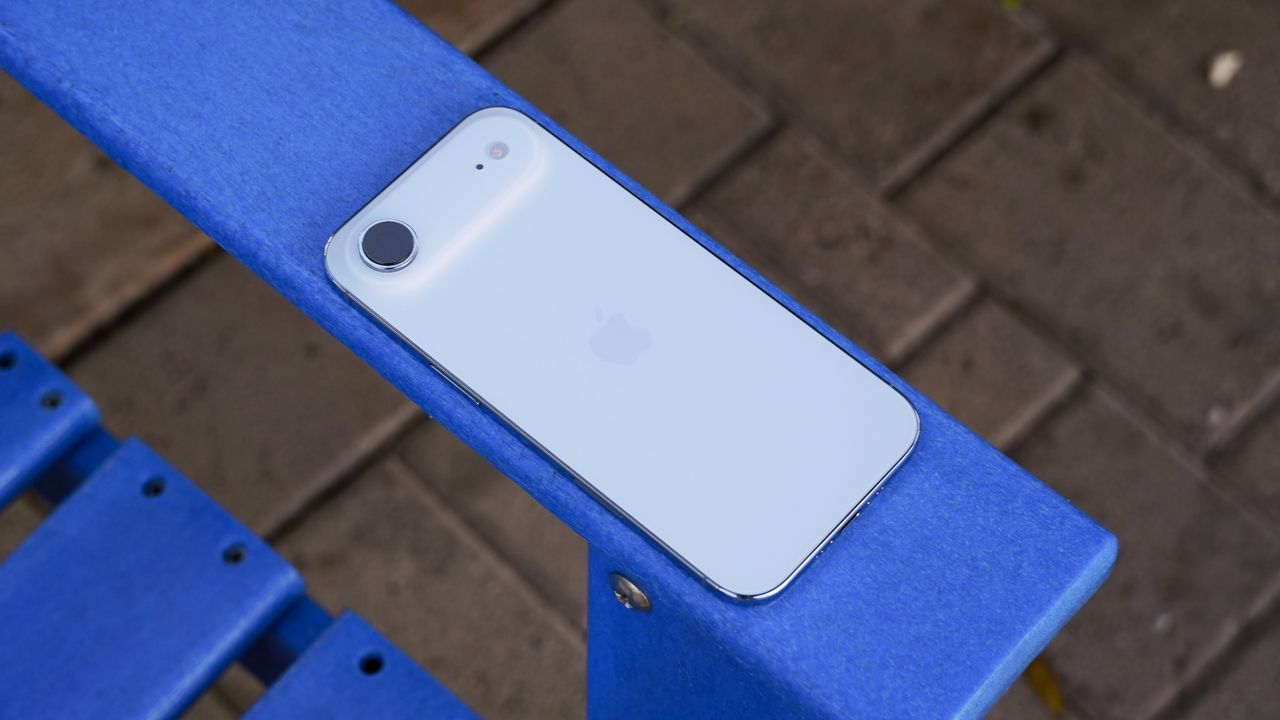
Enjoy our content? Make sure to set Android Central as a preferred source in Google Search, and find out why you should so that you can stay up-to-date on the latest news, reviews, features, and more.
Whether we realize it or not, we make choices and compromises every time we purchase a new tech product. Samsung Galaxy S25 Ultra users give up a bit of room for a bigger battery in favor of a siloed S Pen, and foldable users often sacrifice camera quality for the dual displays and hinge.
In 2025, smartphone brands are emphasizing thinness and lightness as key features. It started with the Samsung Galaxy S25 Edge, which drew ire from Android fans, and Apple took that concept to the next level with the iPhone Air, which seems to concede something in every area in the pursuit of a futuristic design. It's the epitome of form over function.
As a result, the iPhone Air is inherently controversial. I admittedly love thin and light phones, and using the iPhone Air for two weeks cemented that as it's much easier to handle. That said, I also agree with the iPhone Air's detractors that Apple made significant compromises to get there, and it's an incredibly niche device for that reason.
Apple iPhone Air: Pricing, availability, and specs
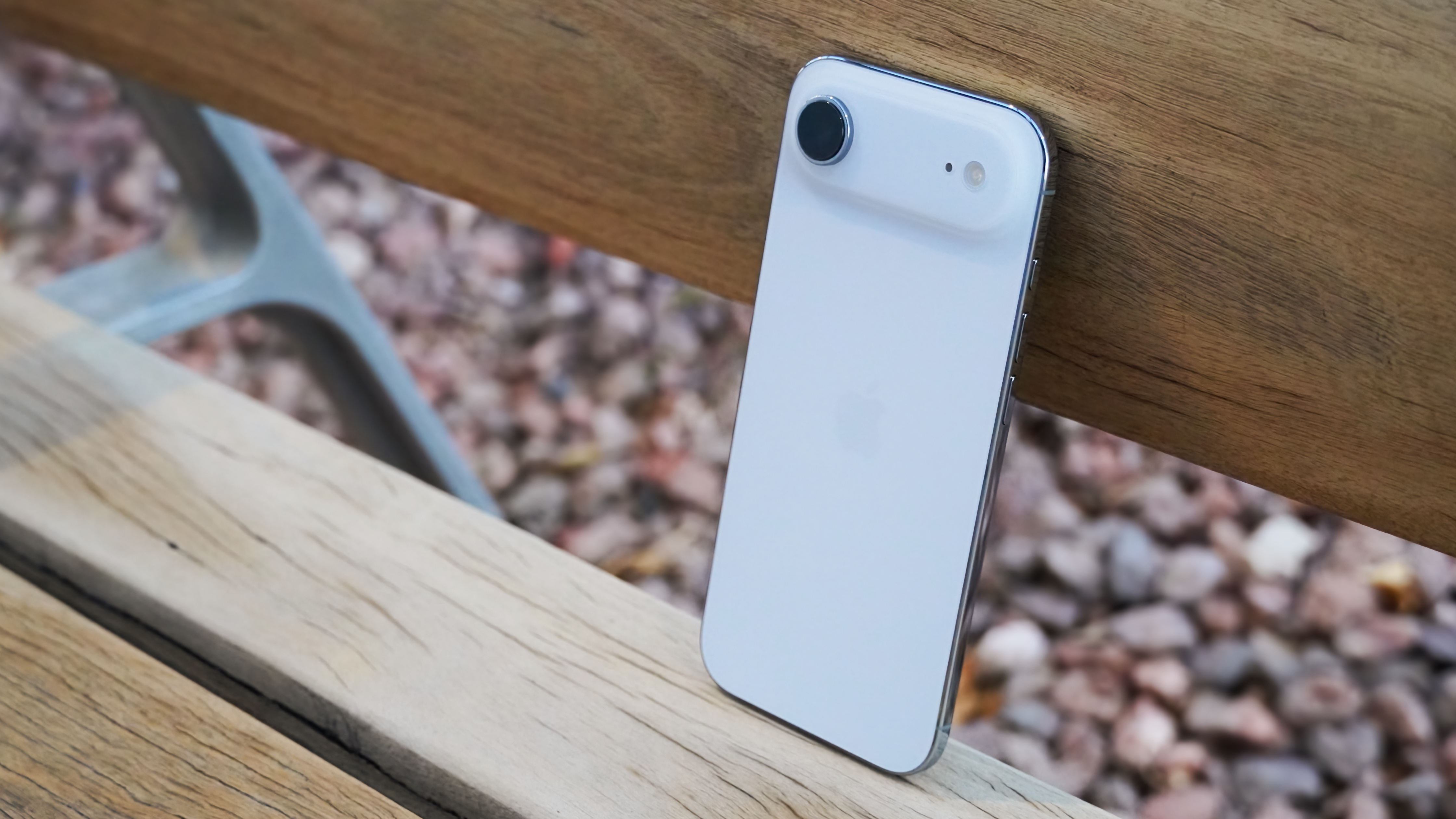
The iPhone Air launched alongside the rest of the iPhone 17 lineup on Sept. 19, 2025, and is now widely available in the U.S and globally as of September 26. The phone retails for $999 and comes with 256GB of storage, but can be configured with up to 1TB for a max price of $1,399. It's sold in Space Black, Cloud White, Sky Blue, and Light Gold colorways. Notably, the iPhone Air is eSIM only worldwide.
You can order it directly from Apple, purchase it unlocked from retailers like Best Buy, or obtain it from your cellular carrier. Global pricing for the iPhone Air starts at £999 in the U.K., AU$1,799 in Australia, and €1,239 in Europe.
Category |
iPhone Air |
OS |
iOS 26 (five OS upgrades guaranteed) |
Display |
6.5‑inch (diagonal) all‑screen OLED display, 120Hz LTPO, 3,000 nits peak brightness |
Processor |
Apple A19 Pro |
RAM |
12GB |
Storage |
256GB, 512GB, 1TB |
Rear Camera 1 |
48MP Fusion primary, 26 mm, ƒ/1.6 aperture, sensor-shift optical image stabilization 2x optical-quality zoom |
Selfie Camera |
18MP Center Stage camera ƒ/1.9 aperture Autofocus with Focus Pixels |
Audio |
Earpiece speaker |
Connectivity |
Wi-Fi 7, Bluetooth 6, Thread, NFC, 5G, MagSafe, USB-C (2.0) |
Protection |
IP68 |
Battery |
3,149mAh (per EU filings) |
Charging |
20W wired and MagSafe/Qi2; 0% to 50% in 30 minutes |
Dimensions |
156.2 x 74.7 x 5.64mm |
Weight |
165g |
Colors |
Space Black, Cloud White, Light Gold, Sky Blue |
Apple iPhone Air: Design
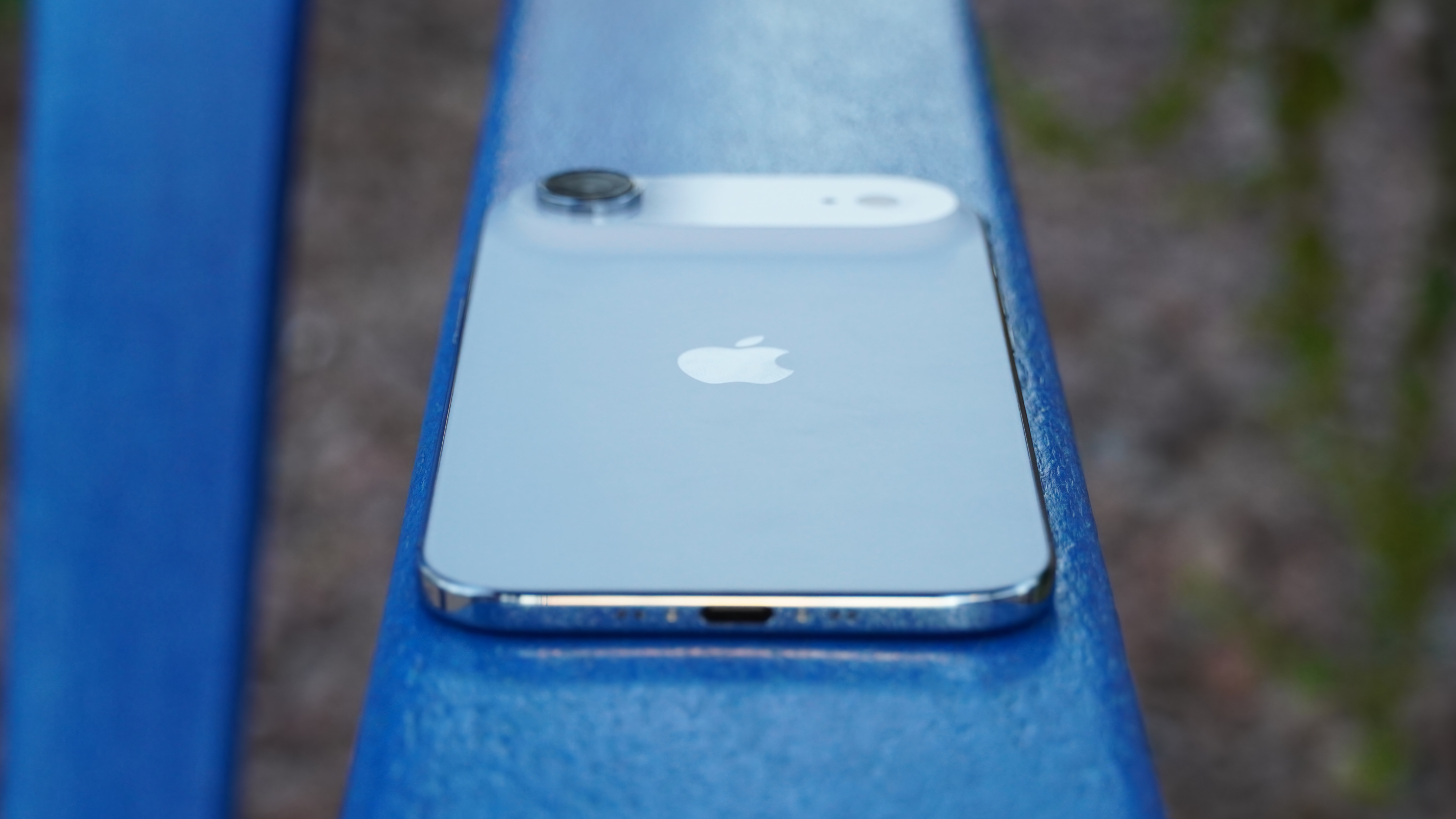
- The iPhone Air's unique design has practical and style benefits, and it's the only titanium model this year.
- The giant camera plateau looks smaller in person and doesn't impact daily use.
Many see the iPhone Air as a breakthrough first-generation product that might not be fantastic today, but sets the stage for future Apple products (foldable iPhone, anyone?). I don't see it that way. The iPhone Air is more of a return to form for Apple, reverting to a time when its product design prioritized a delicate balance between form and function — and leaned more toward form when necessary.
Even the idea of cramming the iPhone Air's logic board into the camera plateau isn't really new to Apple; the design strategy used to build the iPhone Air can be traced back to as early as 2015.
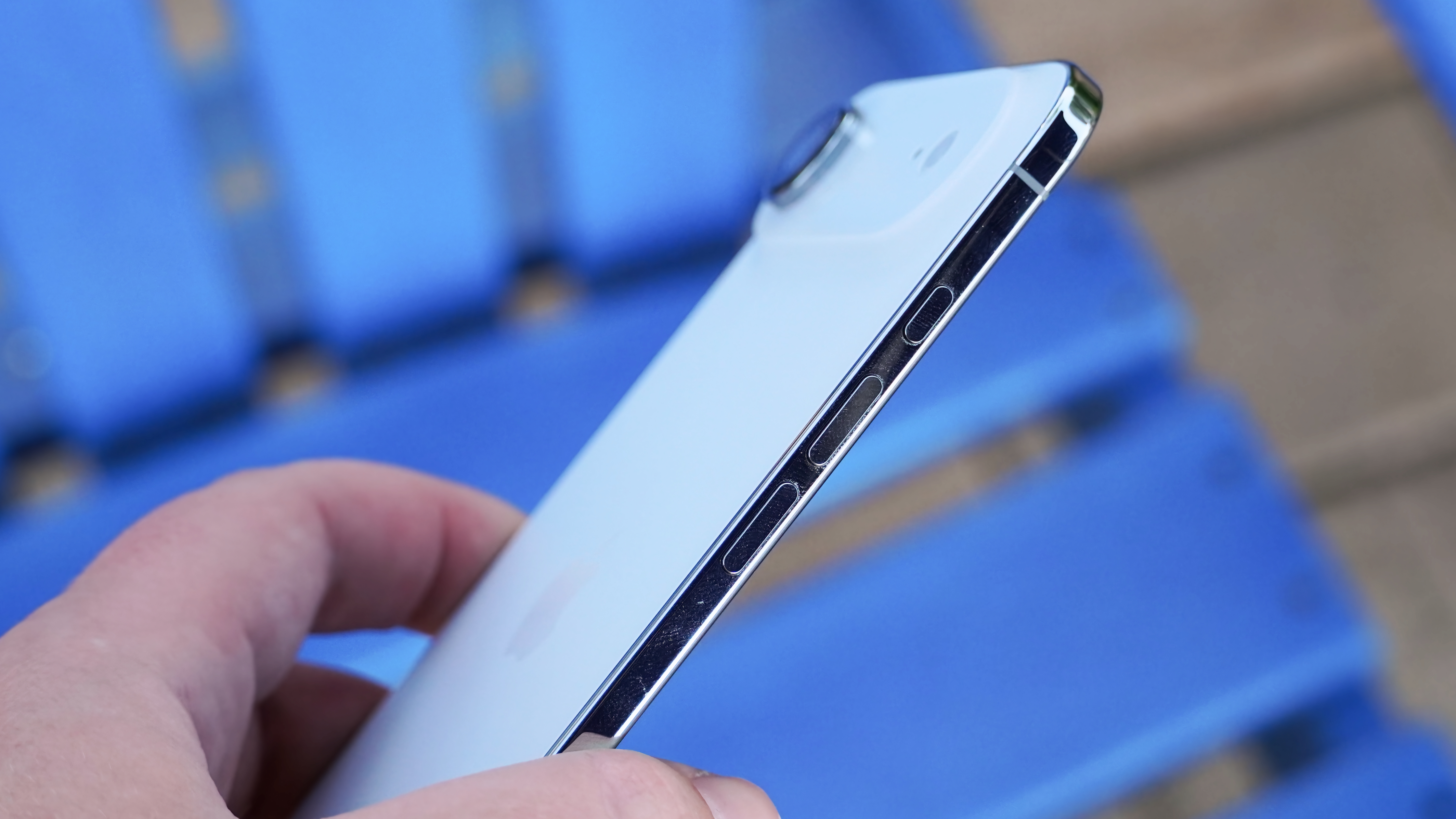
The iPhone Air is extremely thin and impressive, but in a way that aligns with recent products like the iPad Pro M4. It measures 5.64mm thick across much of the body, with a sloping camera plateau that stashes away the internals and a single rear camera.
The plateau appears much larger in photos than it actually feels in person. In fact, I've come to use it as a place to rest my pointer finger while holding the Air, sort of like a grip or PopSocket. It helps for stability and usability, as I can hold the iPhone Air one-handed without it slipping due to the plateau.
It's covered with glossy glass, but the main rear glass slab of the iPhone Air has a matte, frosted finish. I'm not sure I like the contrasting materials on the back, but the glossy plateau matches the polished titanium side rails. Between all the glass and titanium, the iPhone Air feels premium, possibly the most premium out of the iPhone 17 lineup.
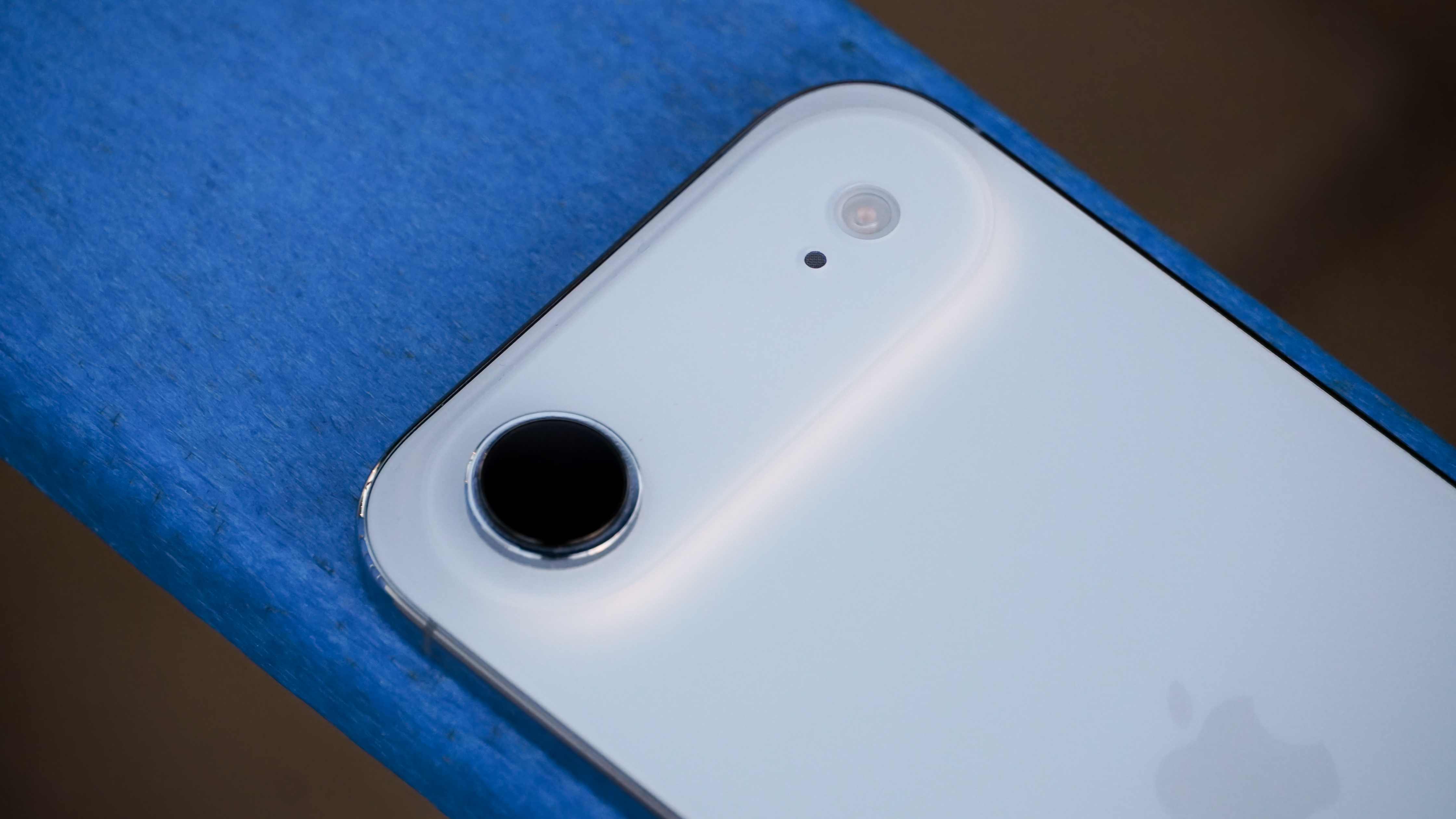
The colors are relatively uninspiring. The Sky Blue Air used for this review looks very similar to the Cloud White or Light Gold models. I was so unimpressed that I returned mine for Space Black, which I think is the best color.
The titanium frame, Ceramic Shield 2 glass, and IP68 protection should enhance the iPhone Air's durability. I didn't baby my Air at all, rocking it caseless and dropping it accidentally on occasion, and there was no notable wear. The material choices here should help it fare better than the iPhone 17 Pro, which has anodized aluminum that can scratch off or scuff up over time.
An underrated feature of the iPhone Air is its weight, as the phone weighs just 165g. It's slightly heavier than the Galaxy S25 Edge, but it's still incredibly light for a phone in this size class.
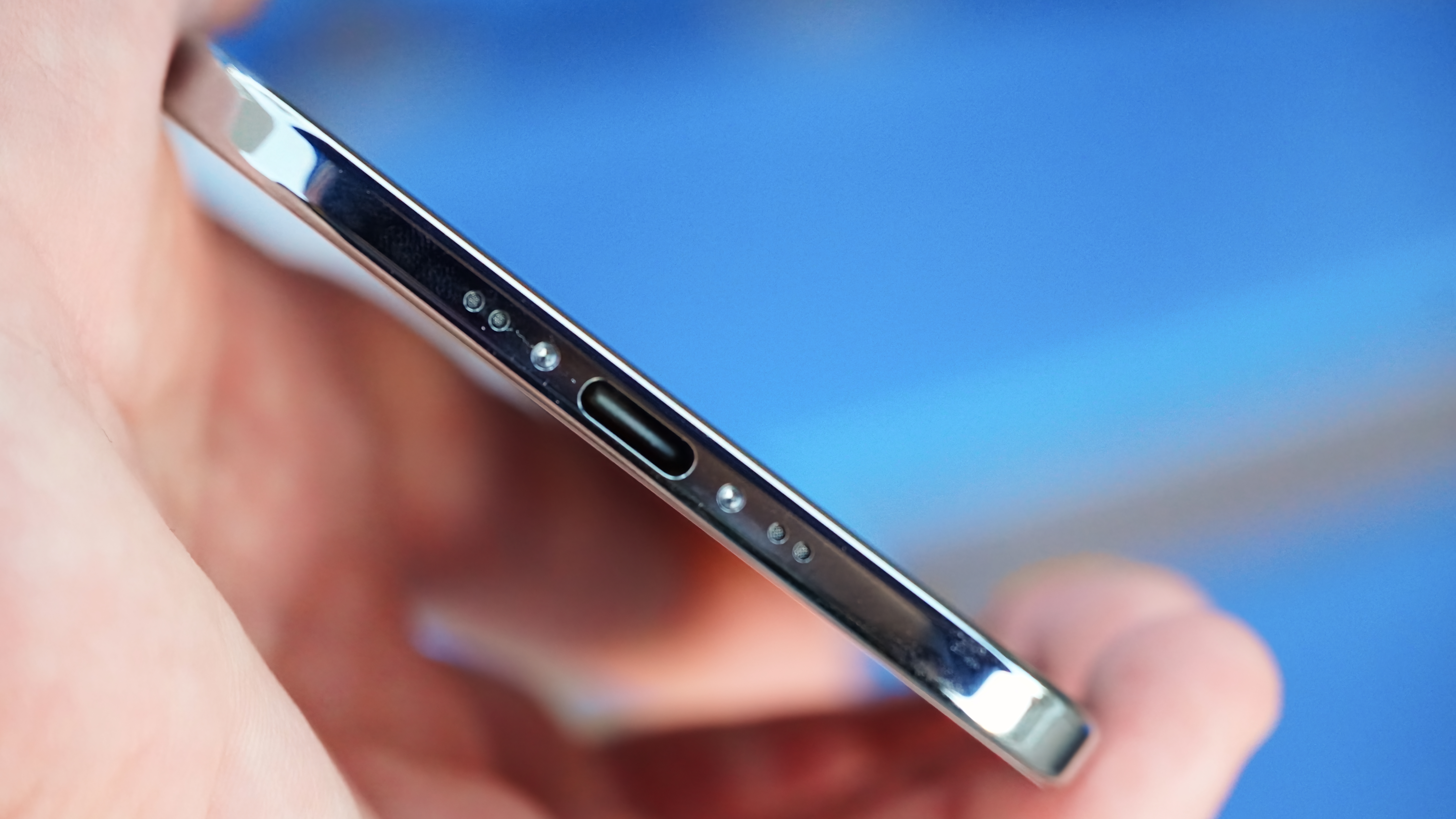
On the bottom, you'll find a slightly off-center USB-C port that's actually 3D printed to make it as thin and durable as possible — a magnificent engineering achievement for Apple. You won't find any speakers, because unlike the rest of the iPhone 17 lineup, the iPhone Air only has an earpiece speaker.
This is understandably shocking, as we've taken stereo speakers on phones for granted in recent years. However, it's worth noting that the earpiece speaker is louder than expected, reaching a volume of around 70dB in my testing. Its volume is suitable for speaker calls, watching quick videos, or listening to a song. Quality is another matter entirely, because there's heavy distortion when the volume is set above 70%.
Even as a budding audiophile, I don't think the iPhone Air's mono speaker is a dealbreaker. It's fine in a pinch, and I can use earbuds, headphones, and proper speakers when I care about quality. If you're someone who uses their phone speaker, steer clear of the iPhone Air.
Apple iPhone Air: Display
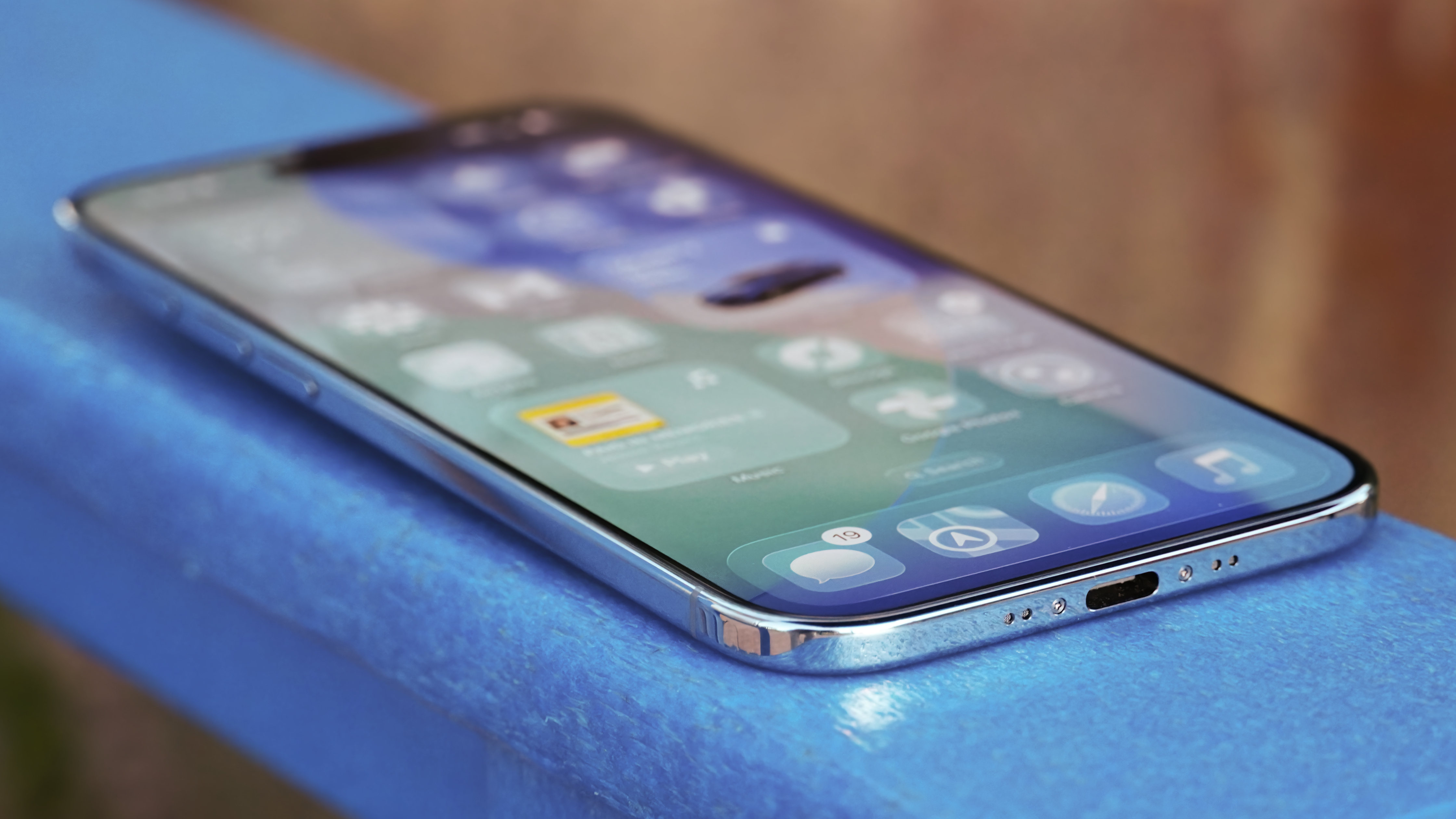
- The 6.5-inch OLED display (120Hz) is gorgeous, but brightness throttling remains a pain point.
- The Ceramic Shield 2 anti-reflective coating isn't as good as Samsung's, but improved scratch resistance is a win.
The iPhone Air replaces the iPhone 16 Plus in the lineup, but only on paper. The iPhone Air slots right between larger and smaller iPhones with a 6.5-inch display, making it the best of both worlds.
I'm a small phone lover, and the iPhone Air's size and weight made it easier to use a 6.5-inch handset. Still, it won't feel as compact as smaller phones or as spacious as bigger ones.
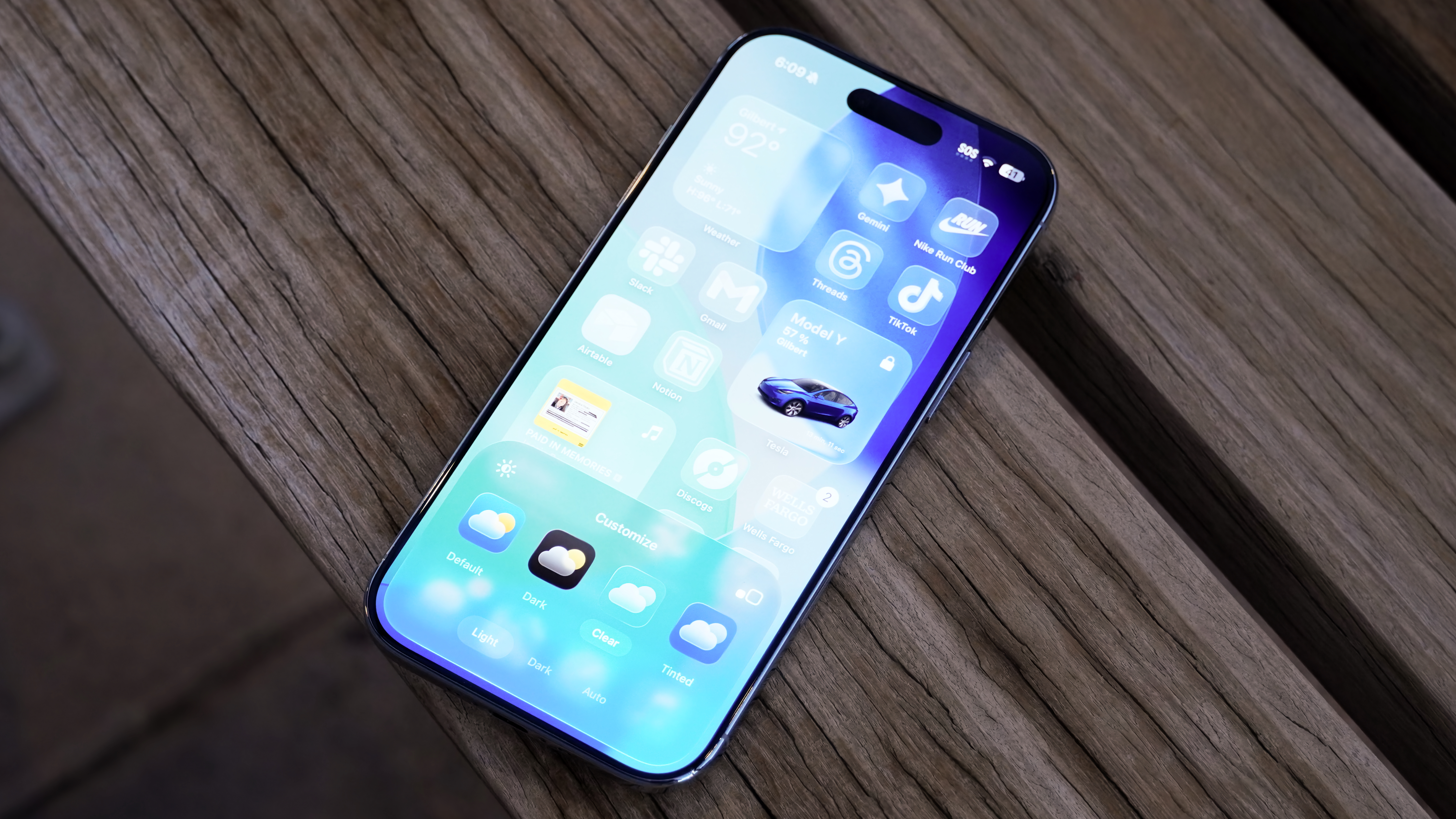
In terms of specs, it's "Pro" all the way. It features an OLED panel with high resolution and pixel density. The iPhone Air supports all the features you'd expect, like always-on display (AOD), ProMotion tech with 120Hz refresh rates, HDR, and P3 wide color. It also introduces new accessibility options, including the ability to disable pulse smoothing entirely, which is particularly beneficial for individuals sensitive to pulse-width modulation (PWM).
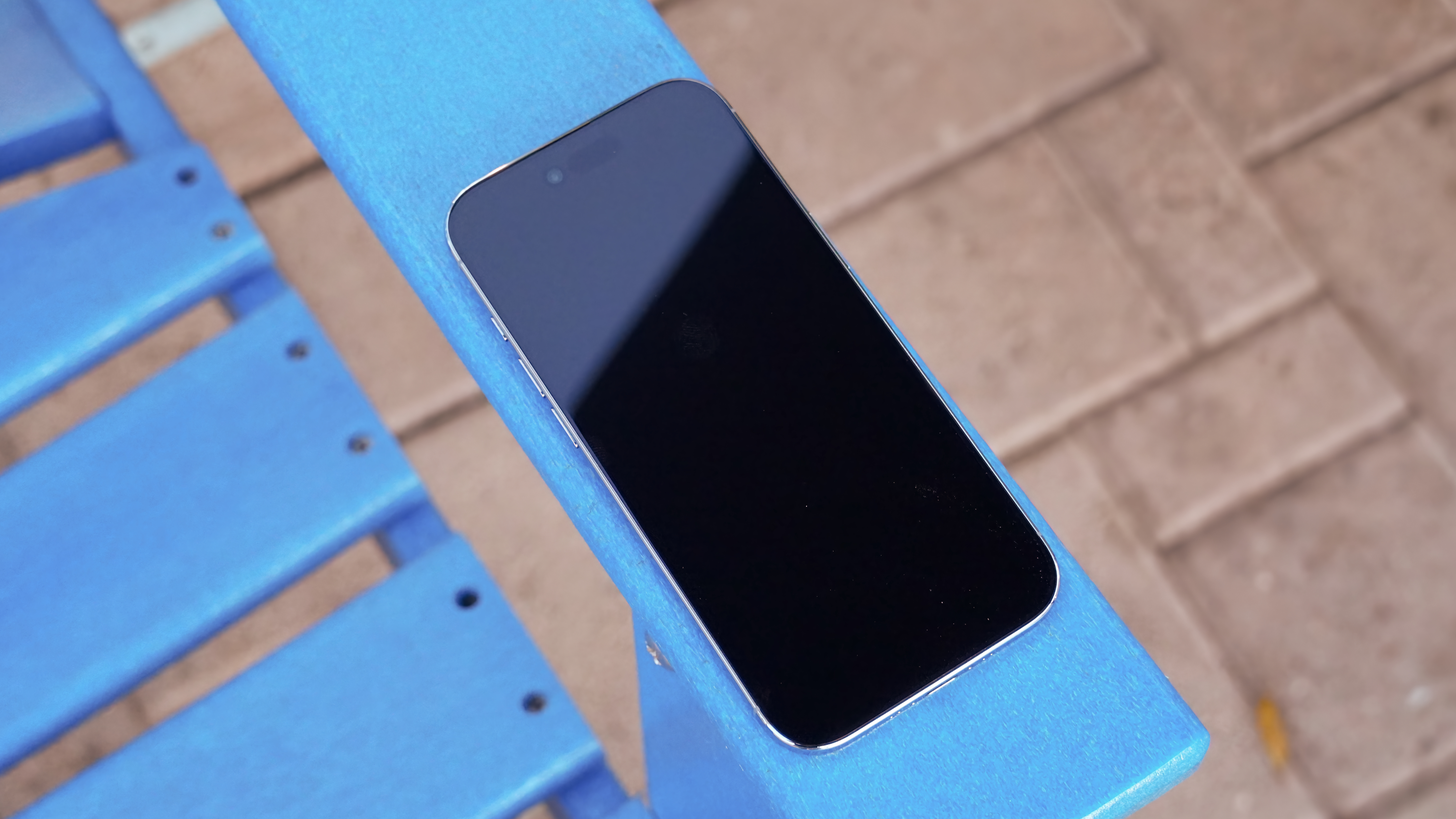
Ceramic Shield 2 is a new version of Apple's premier display glass, claimed to be 3x more scratch-resistant than its predecessor. It also sports an anti-reflective coating, similar to the Galaxy S25 Ultra, but Samsung's version makes a bigger impact.
Glare will still be a problem, and it's too early to know for sure how much more scratch-resistant the Air is compared to my prior iPhones.
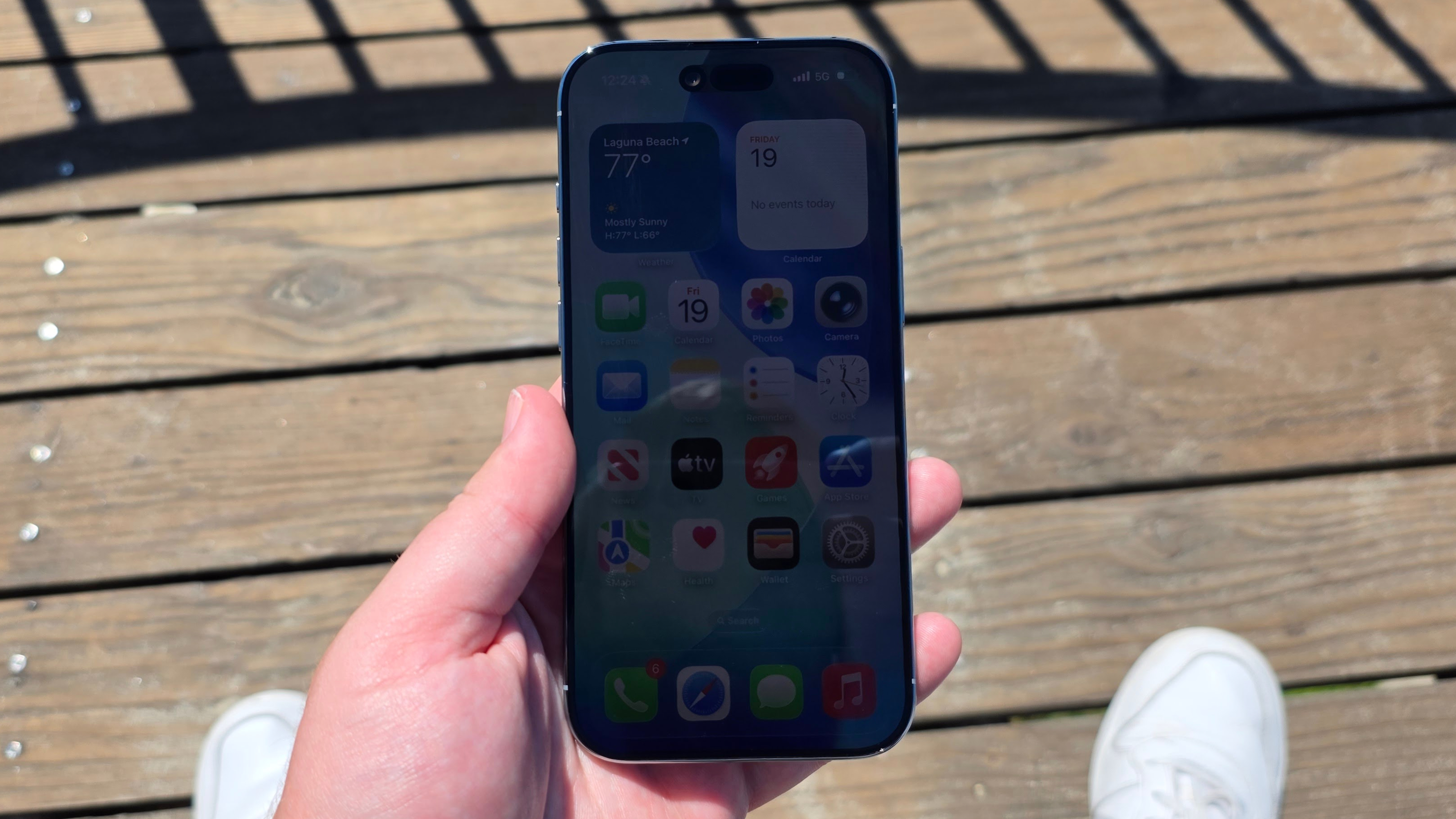
Combined with the iPhone's tendency to aggressively dim brightness in direct sunlight due to thermal throttling, I found outdoor visibility on the Air to be very unimpressive. The phone's 3,000-nit outdoor peak brightness rating exists merely on paper, as the Air dims almost immediately after stepping outside.
To be clear, this affects many iPhones, and smartphones in general, but it may be worse on the iPhone Air. The tight form factor and titanium chassis may make the Air hot, resulting in lower brightness.
Apple iPhone Air: Performance and battery
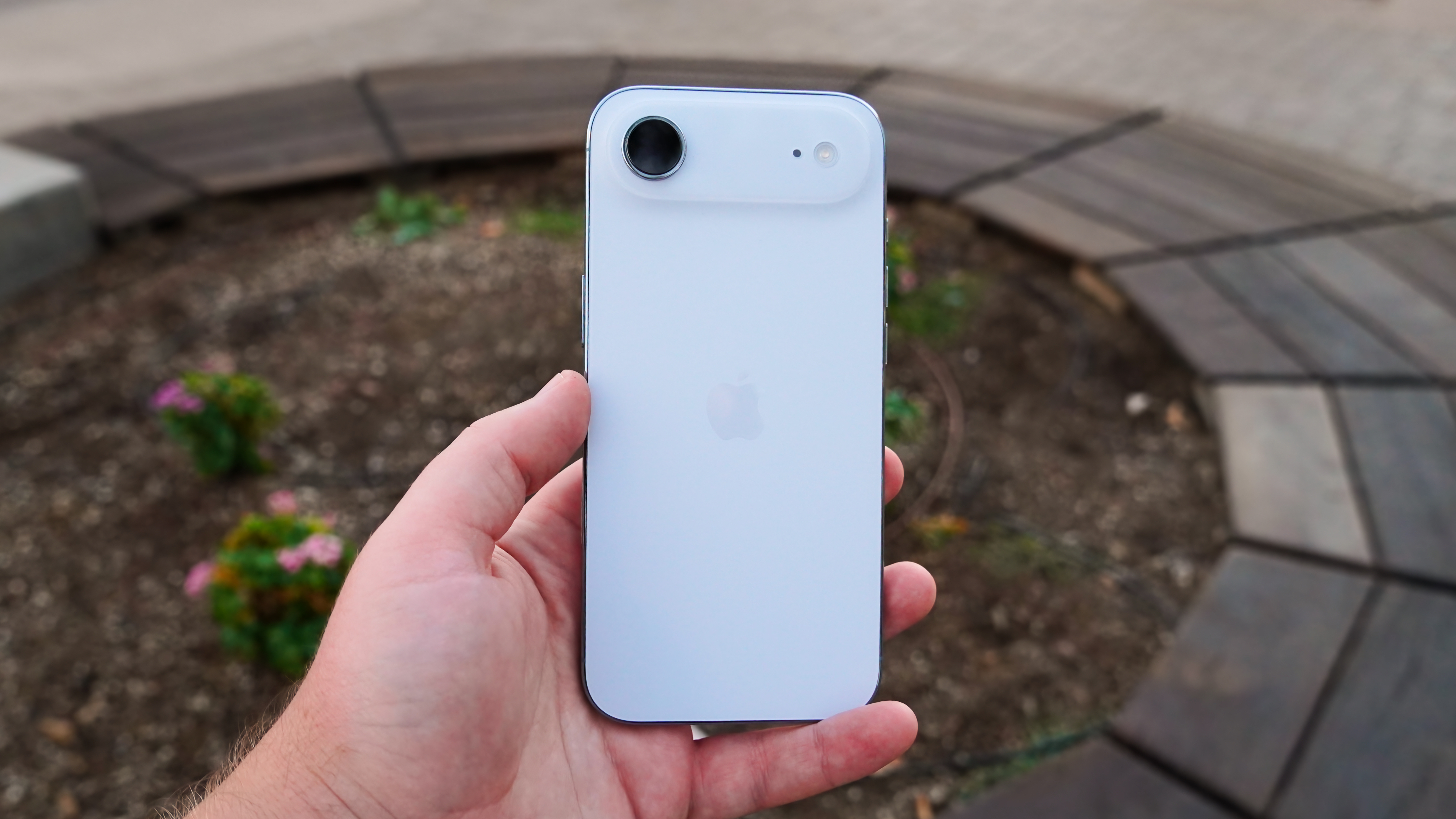
- Apple's A19 Pro chip in the iPhone Air isn't quite as good as the variant in the Pro models.
- It's still plenty fast, but the Samsung Galaxy S25 Edge delivers better top-end performance.
The iPhone Air is powered by the A19 Pro chipset with 12GB of RAM, but it has one fewer GPU core than the iPhone 17 Pro and Pro Max. It will also be limited and throttled due to thermal considerations. There's also an Adaptive Power mode (not exclusive to the Air) that can limit performance when you're using more battery than usual.
As such, this won't be the fastest iPhone on the block, and benchmark data supports that. The iPhone Air typically outperforms the Tensor G5 chip in the Pixel 10 Pro, but falls short of the Snapdragon 8 Elite chip in the Galaxy S25 Edge. It's also expectedly slower than the iPhone 17 Pro with its non-binned A19 Pro, vapor chamber, and aluminum shell.
Category |
Apple iPhone Air |
Samsung Galaxy S25 Edge |
Apple iPhone 17 Pro |
Apple iPhone 16 Pro Max |
Google Pixel 10 Pro XL |
|---|---|---|---|---|---|
Geekbench 6 (single-core) |
3,668 |
3,016 |
3835 |
3344 |
2288 |
Geekbench 6 (multi-core) |
9,365 |
9,588 |
9817 |
8131 |
6030 |
Geekbench AI (Quantized Score) |
6,490 |
5,067 |
6640 |
6066 |
3574 |
3DMark Wild Life Extreme (score) |
3,816 |
5,769 |
5662 |
3688 |
3182 |
3DMark Wild Life Extreme (FPS) |
22.9 |
34.55 |
33.9 |
22.1 |
19.05 |
The device tends to heat up during taxing tasks, including downloading large amounts of lossless music or heavy outdoor usage. There doesn't seem to be a significant impact on daily performance, although I noticed the camera viewfinder dropping frames at one point. This had no impact on recording, but it demonstrated that iOS graphics struggled to keep up in high temperatures.
Battery life is a tricky subject. It should be enough for most users — I got roughly six hours of screen-on time and extra standby hours on a single charge. That said, I'm a power user, so I averaged using about 125% to 150% of battery daily during my review period. Expect to charge around midday if you're a power user like me, or invest in a Qi2 battery pack.
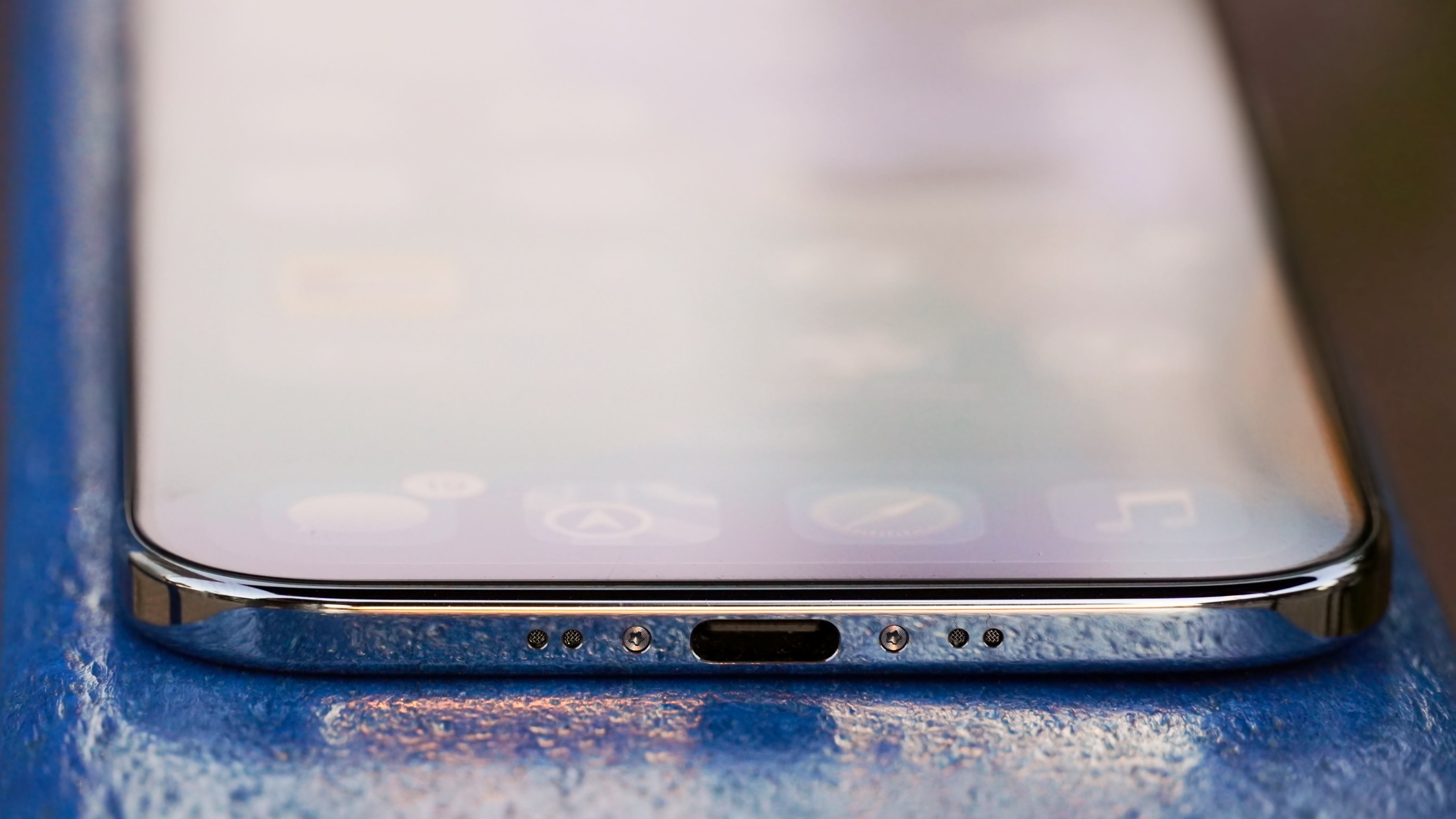
iPhone Air is powered by iOS 26, the successor to iOS 18. It's more than just a new name scheme; there's a redesigned Liquid Glass design language that permeates throughout the experience. While not for everyone, Liquid Glass grew on me, and it seems fitting for a device that feels like one glass slab. It's glossy and reflective by default, and unfortunately, it seems to make simple tasks require extra taps.
Apple Intelligence intentionally feels like an afterthought here. Apple still hasn't delivered on the AI features it promised alongside last year's crop of iPhones, and we're waiting on long-overdue features like an overhauled Siri. For now, you get AI tools that seem to counter Google options — Writing Tools are like Help me write, Clean Up is like Magic Eraser, and Visual Intelligence is like multimodal Gemini Live.
But it's clear that Google still has the edge in mobile AI, and most iPhone users I know turn to Gemini or ChatGPT instead of Apple Intelligence.
Apple iPhone Air: Camera
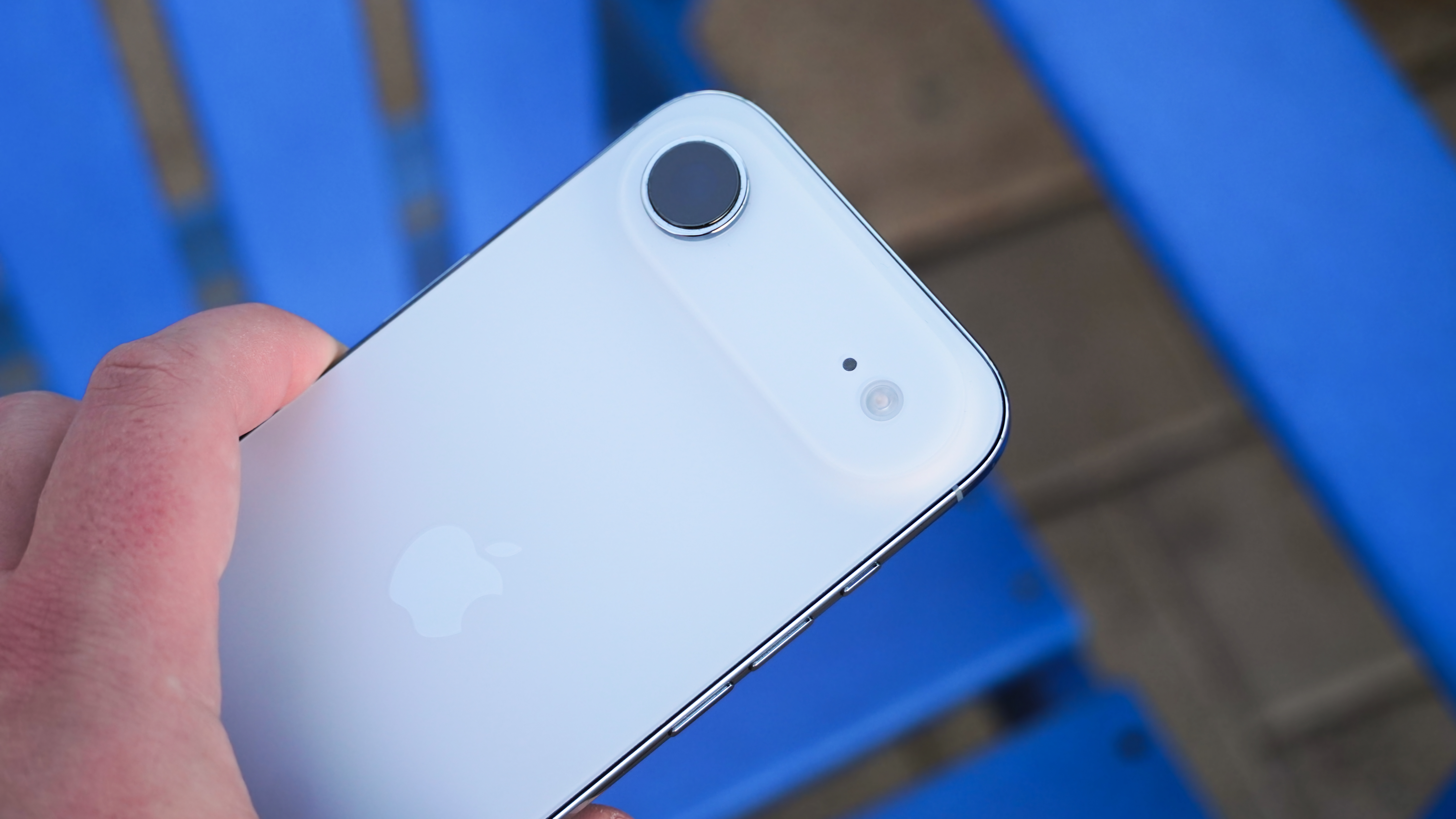
- The primary camera is just fine for standard photos, and the 2x sensor crop is "good enough."
- The iPhone Air gets the cool square sensor on the front, allowing for ultrawide, vertical, and horizontal selfies without moving the device.
There's only one rear camera on the iPhone Air — a 48MP Fusion lens with an f/1.6 aperture — but Apple wants you to think it's really two, thanks to a 2x crop that provides a bit of zoom at optical-quality. Two things can be true: it's not a gimmick, but it's also not a replacement for a telephoto camera.
Here's how the 1x and 2x shots look on the iPhone Air:
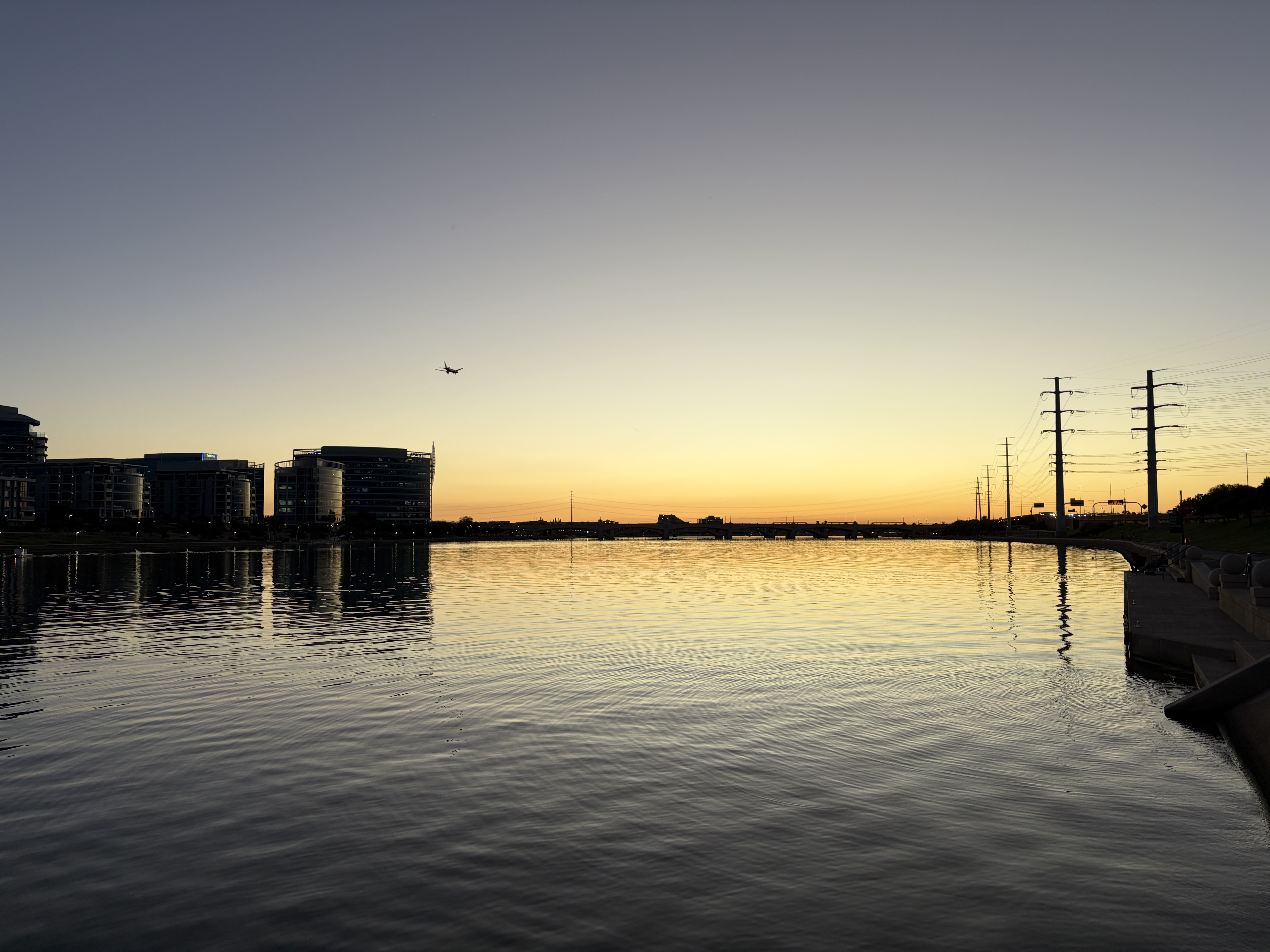
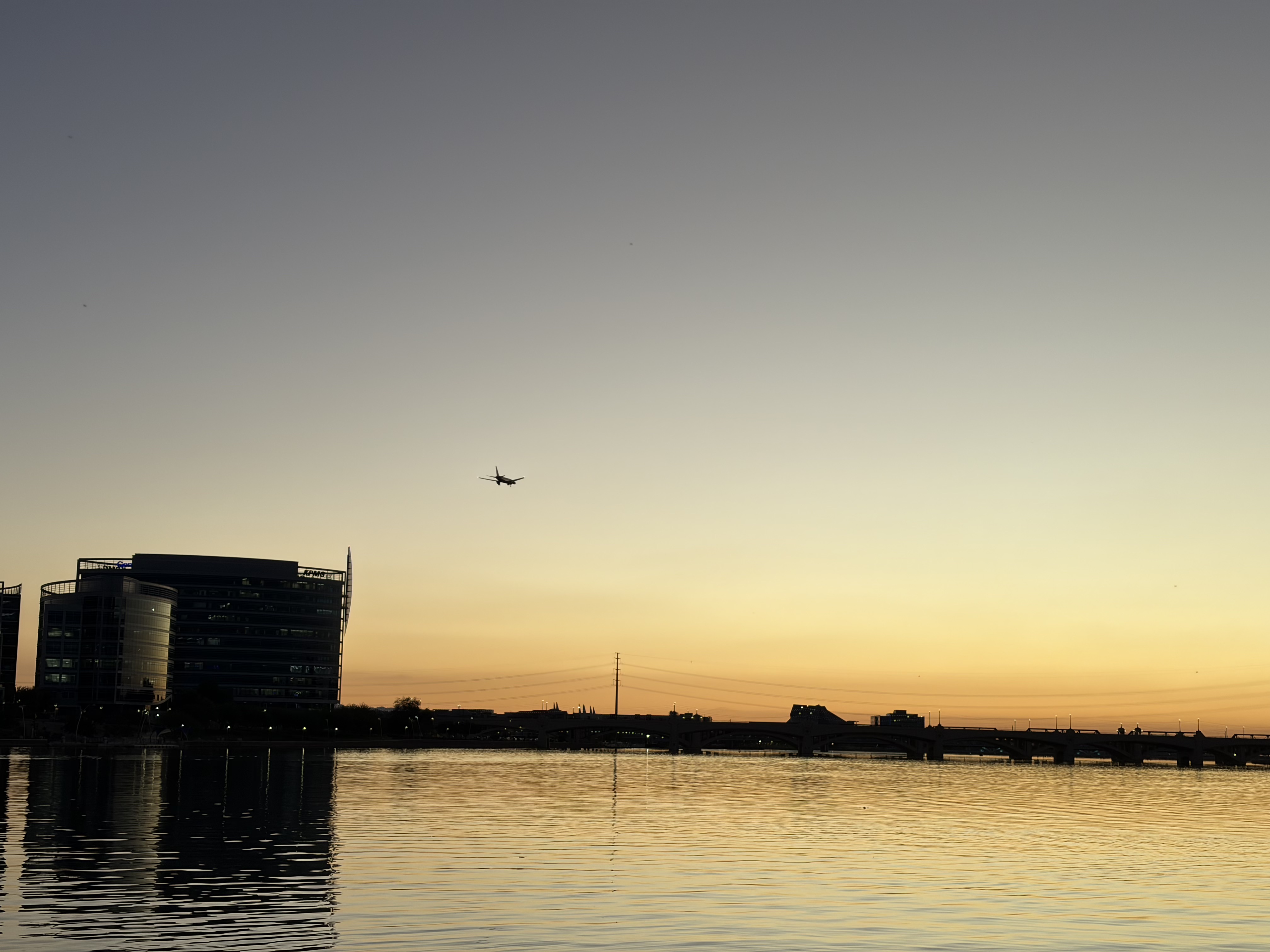
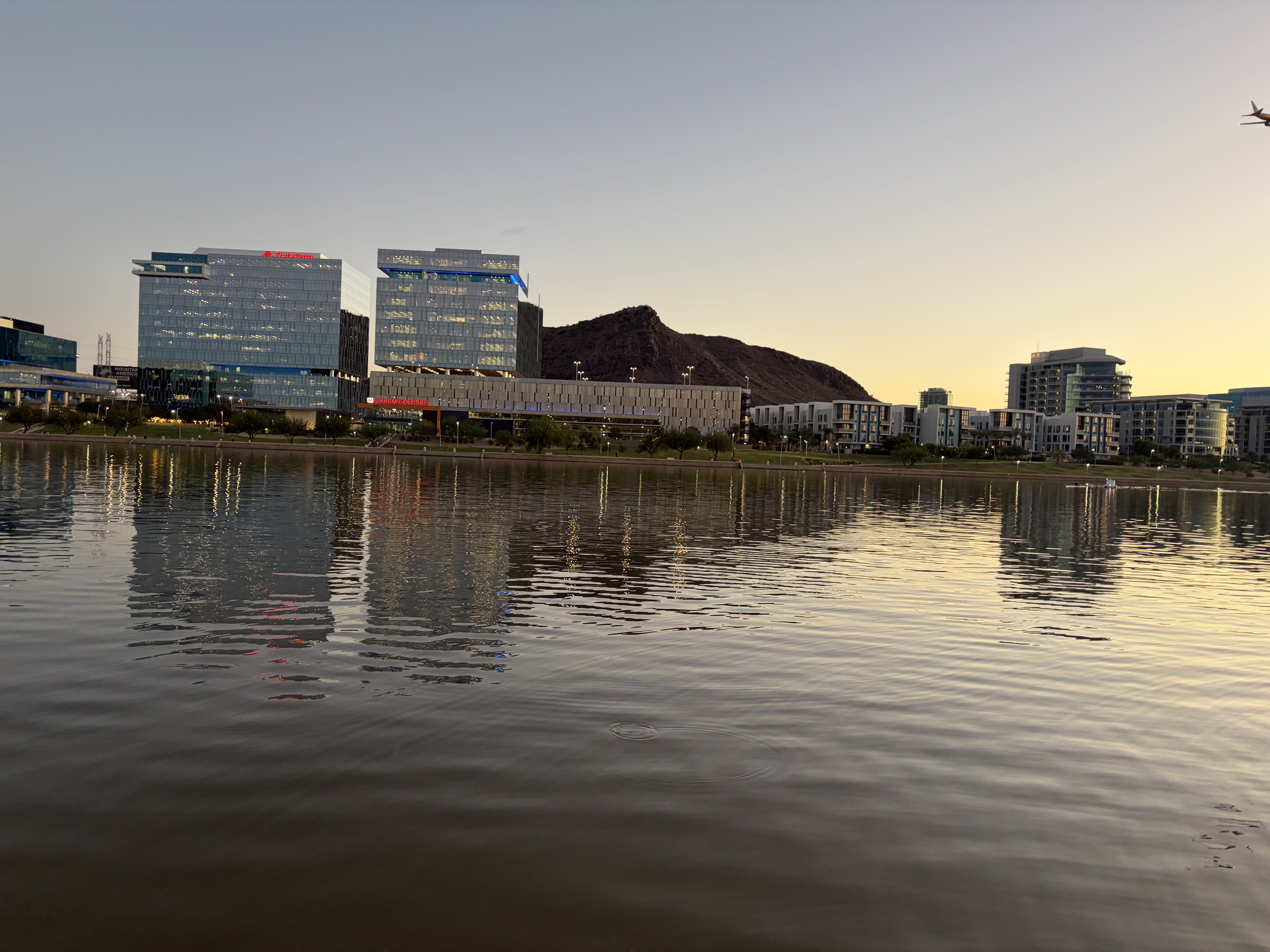
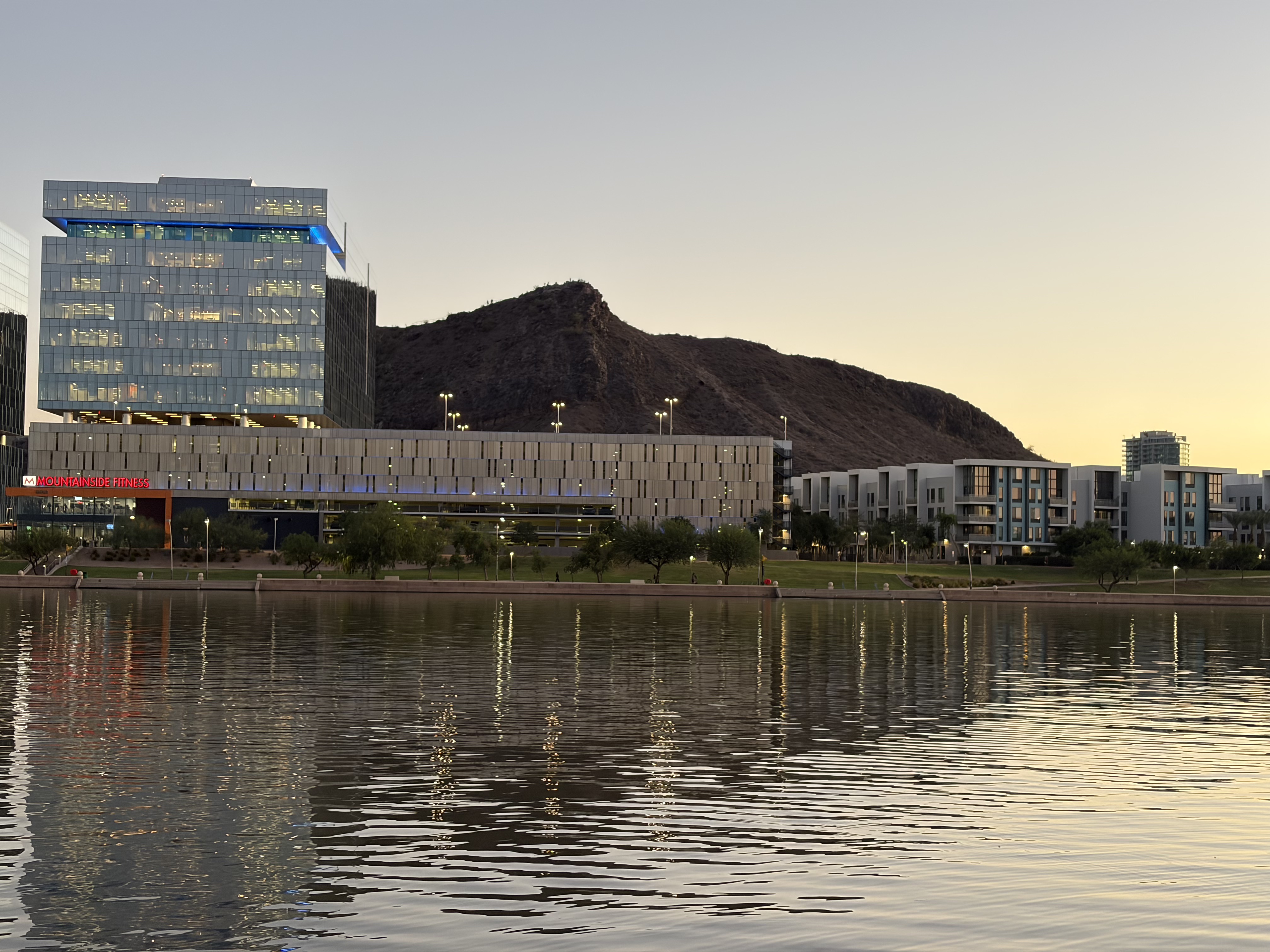
The camera button remains, and it's easier to use on the iPhone Air's thin frame. Notably, the extra touch-sensitive features are off by default.
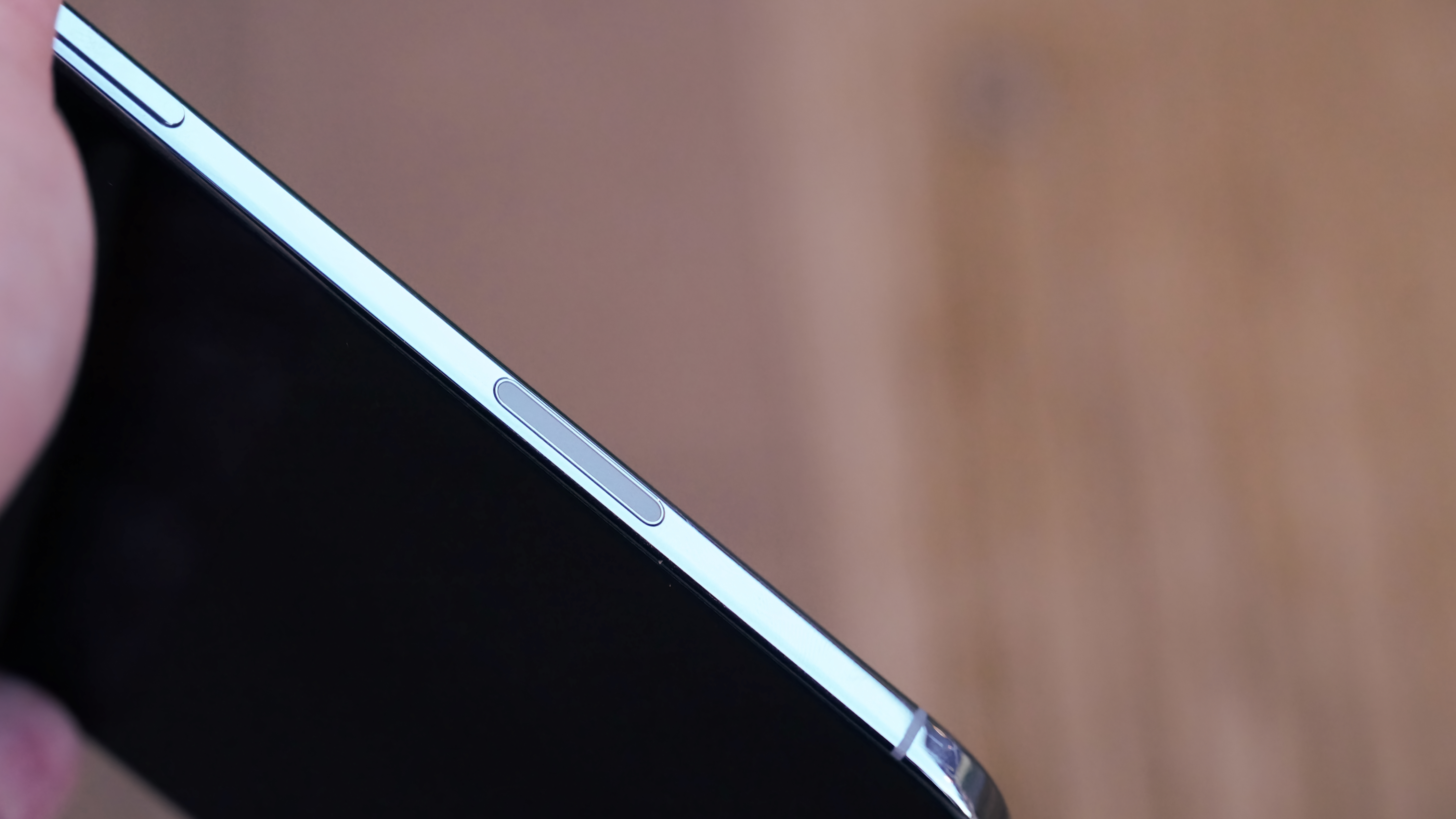
You shouldn't sleep on the iPhone Air's primary camera. It takes great photos in all conditions, from sunny days to dark nights. While not as good as the primary camera on other models, it produces great shots with stellar color accuracy. Again, it can't replace a dedicated ultrawide or telephoto lens, but the 48MP sensor is great for basic shots.
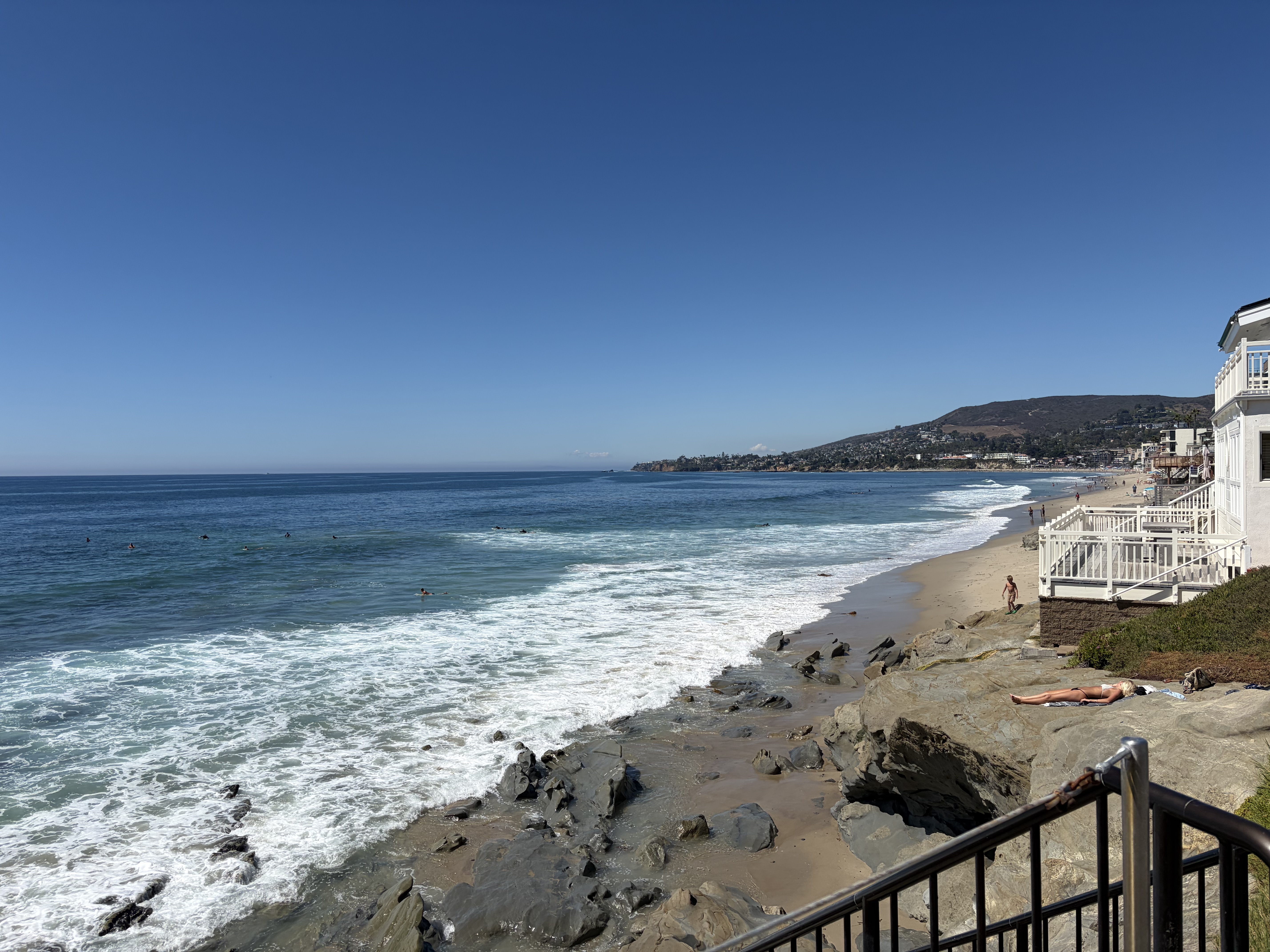
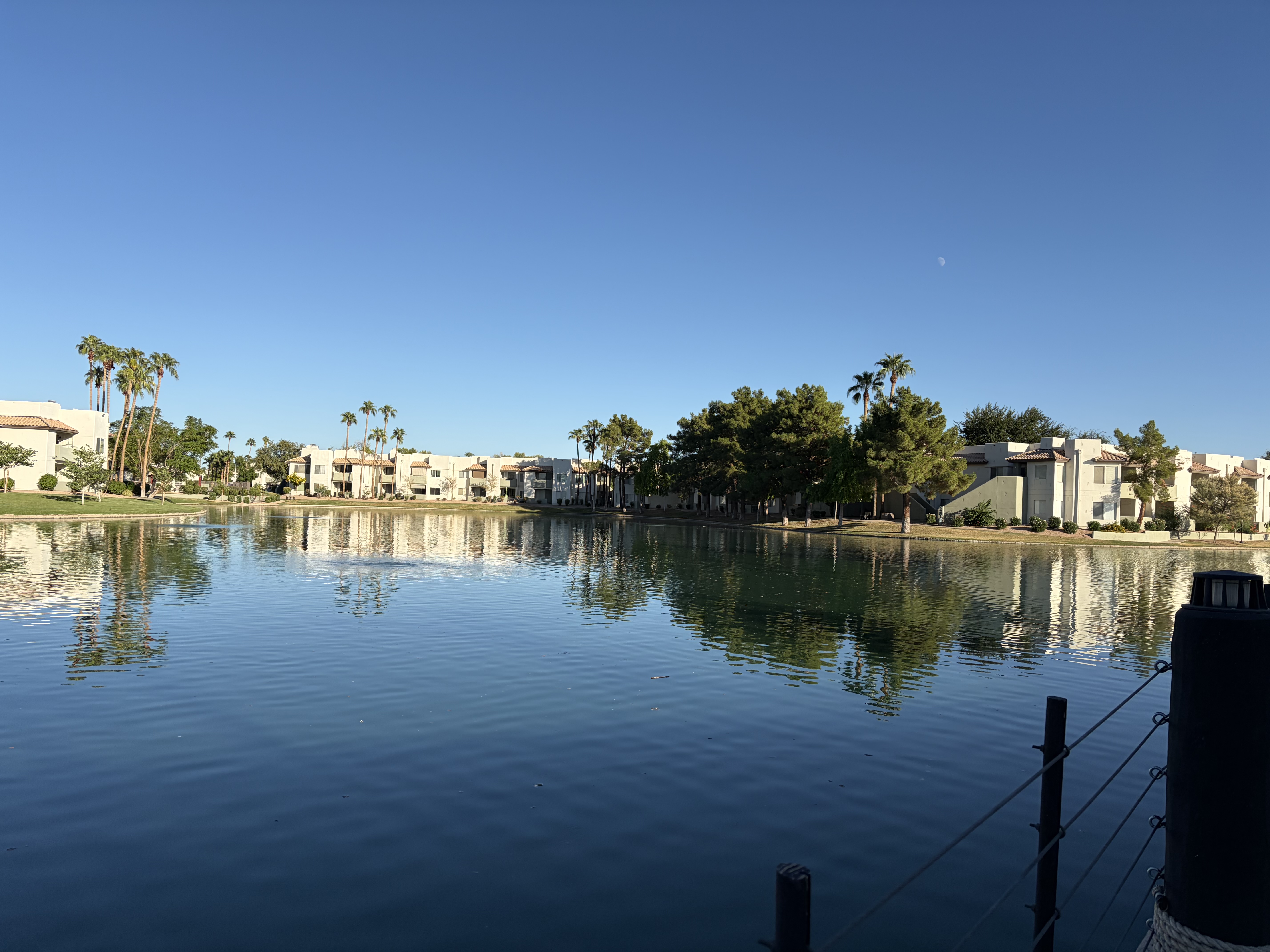
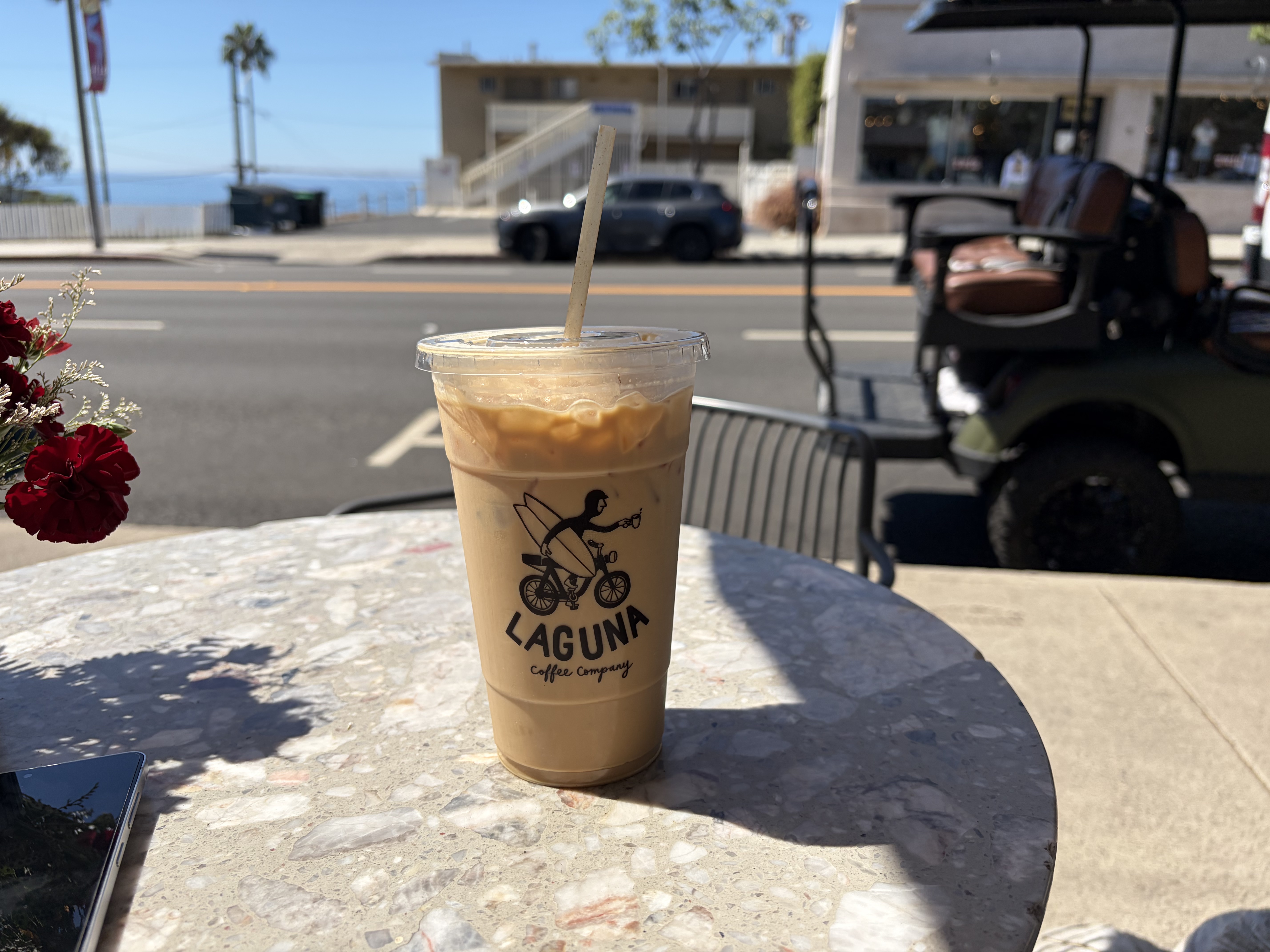
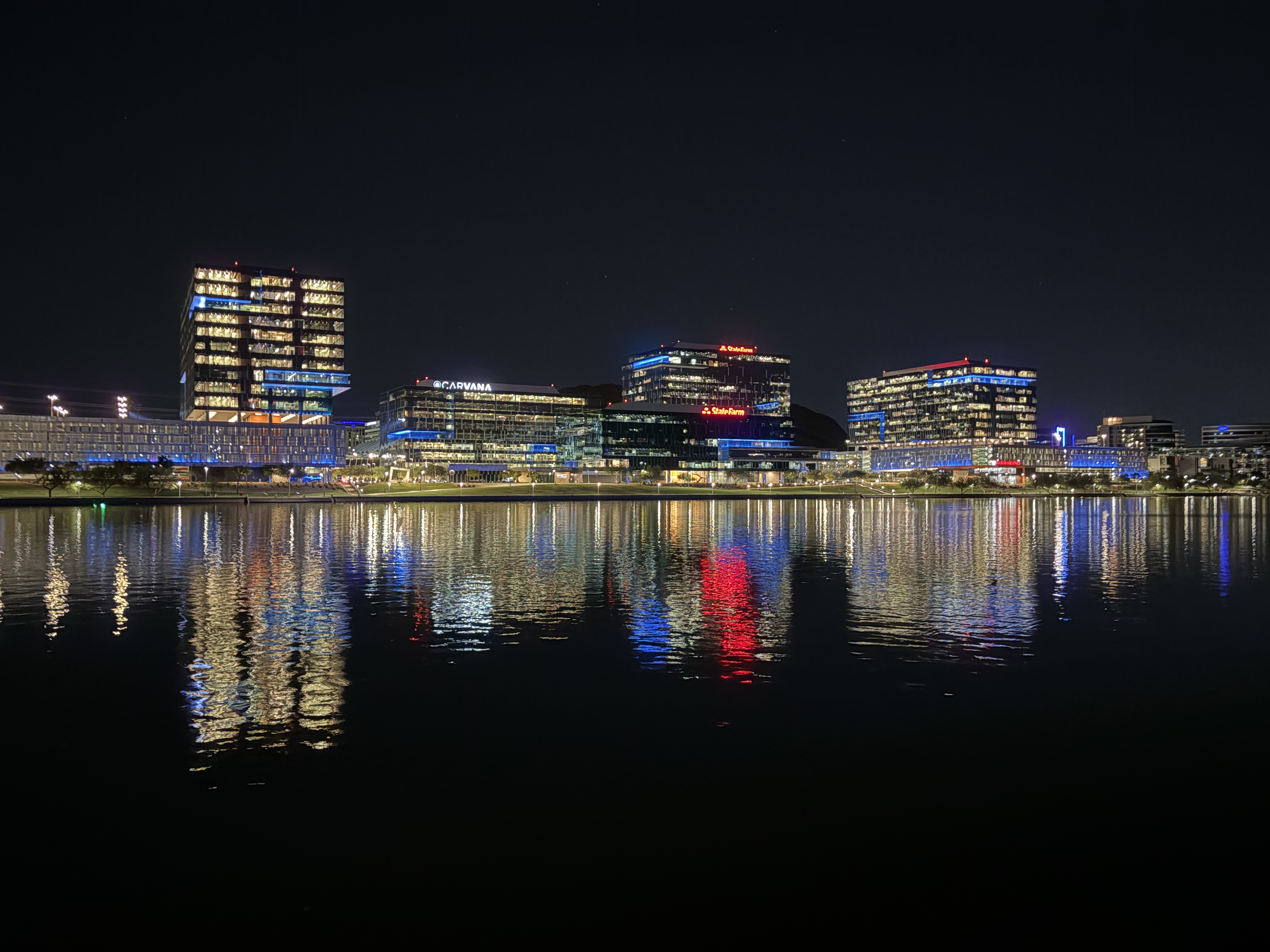

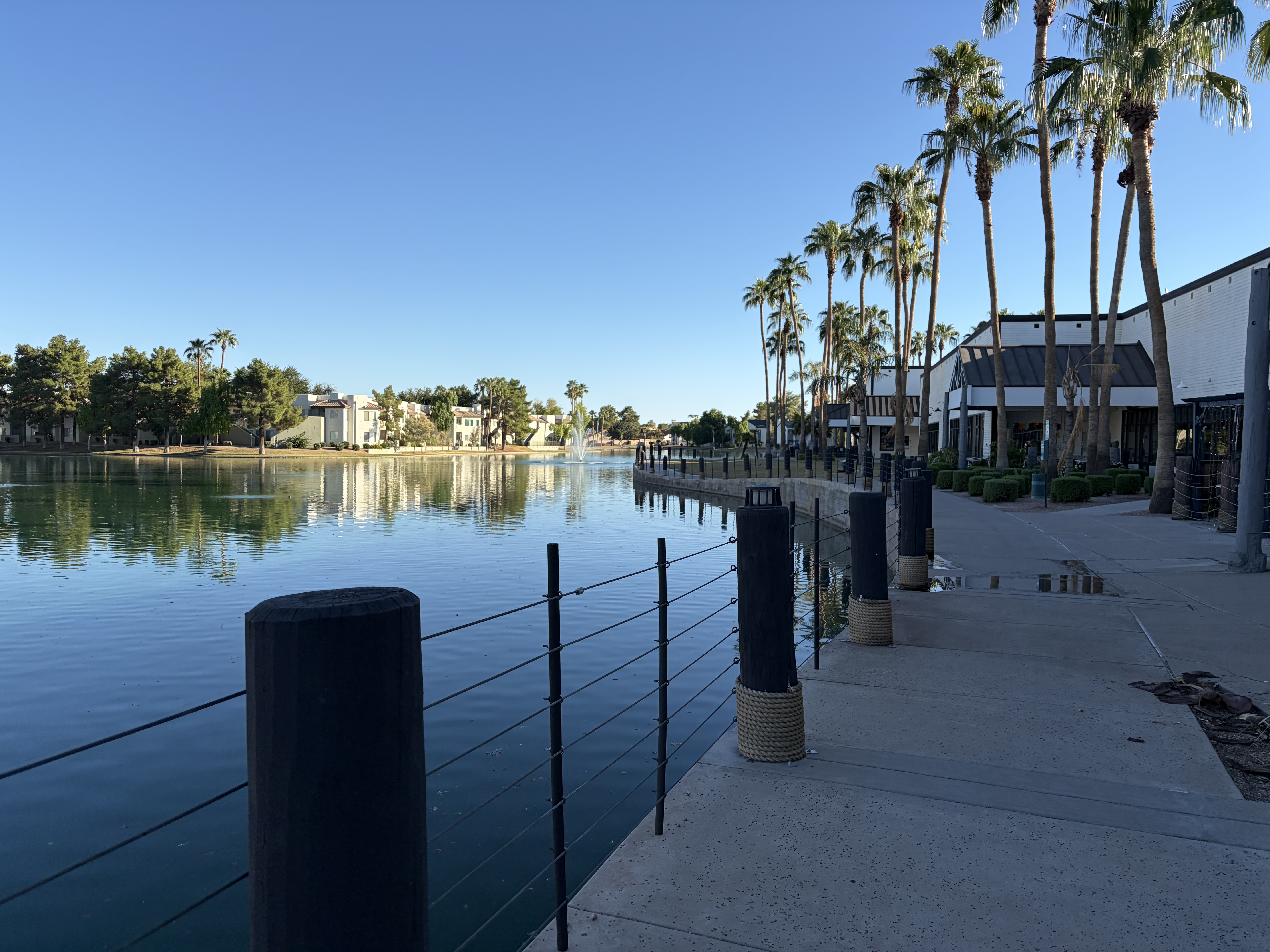
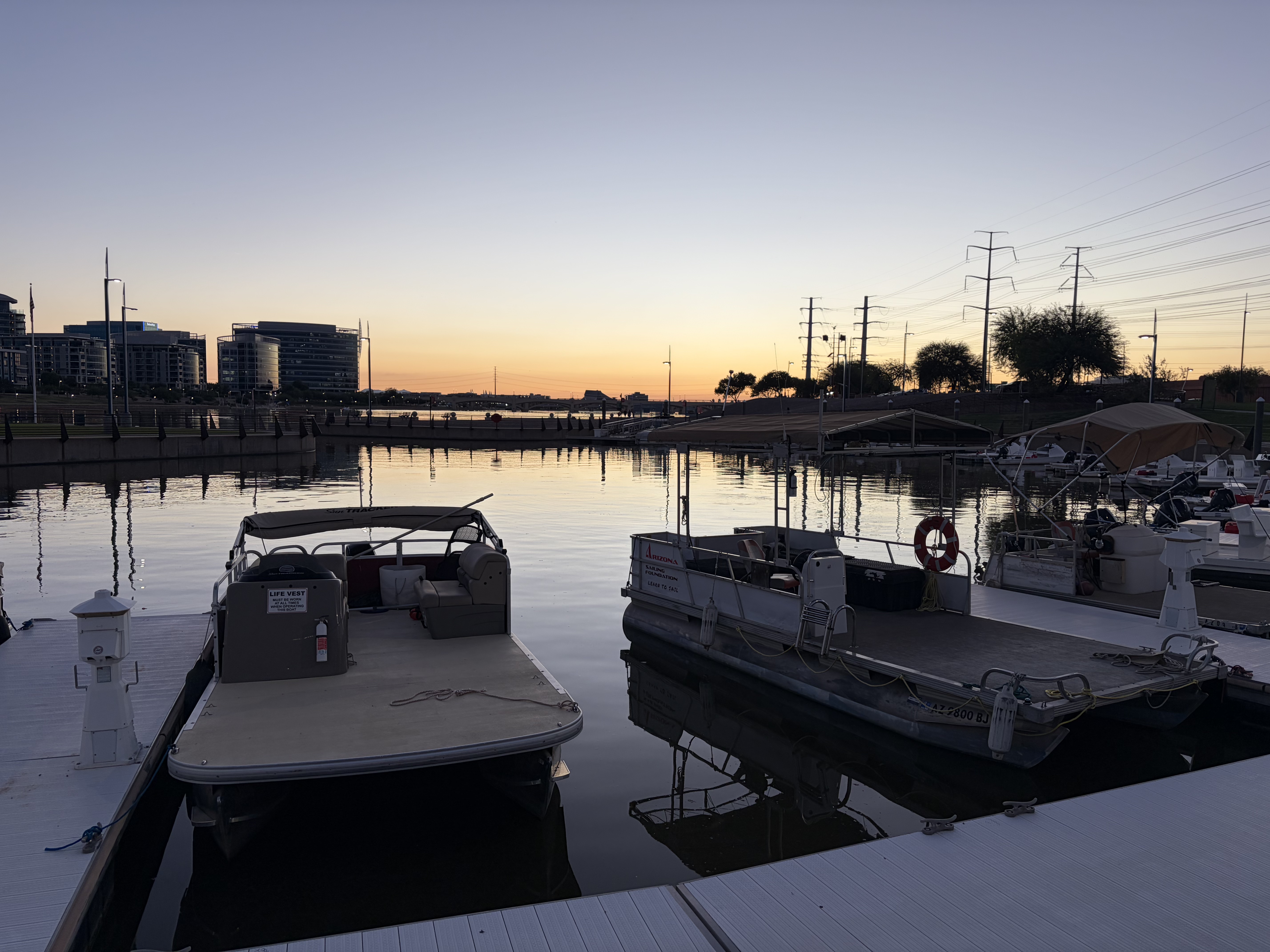
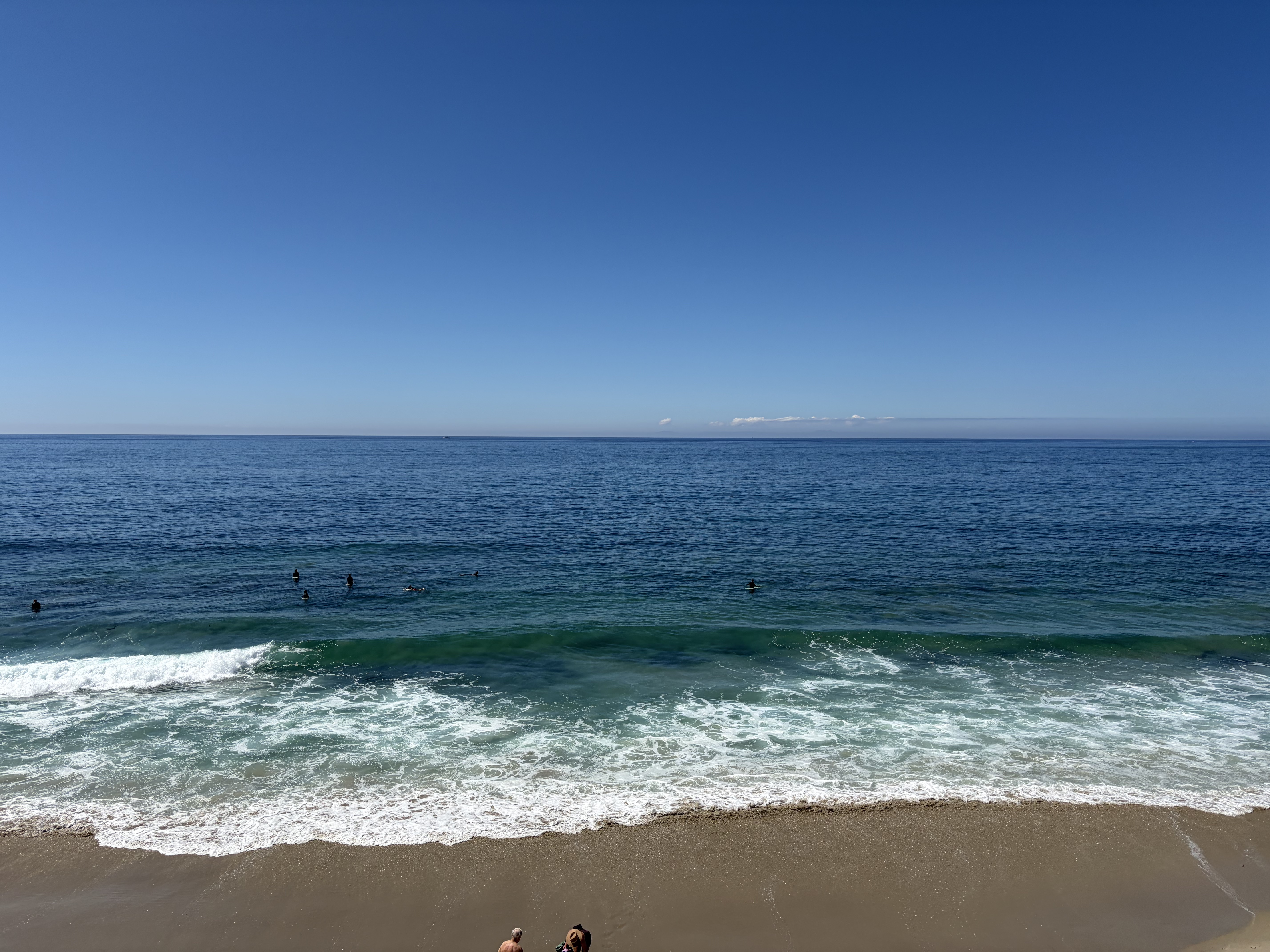
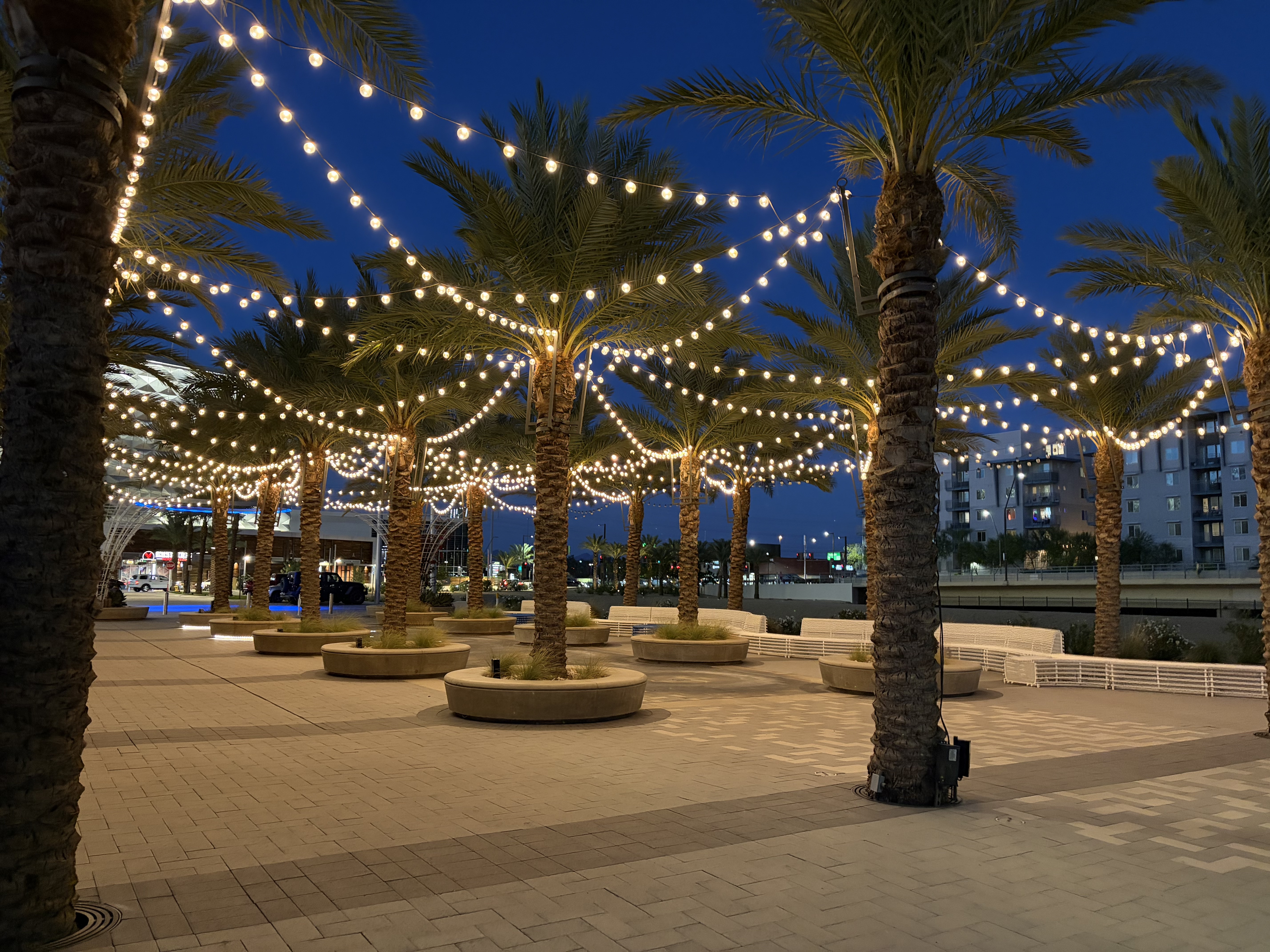
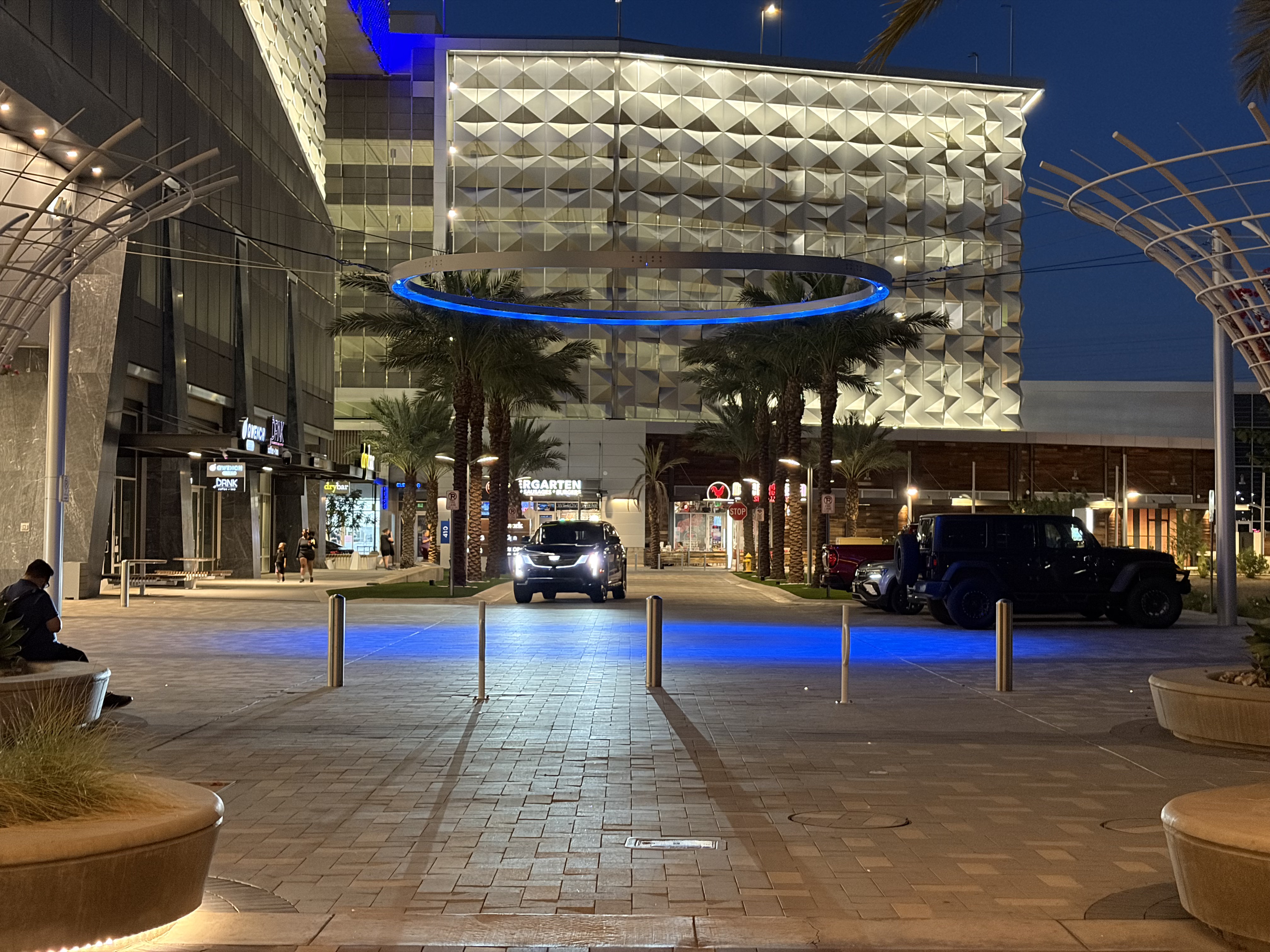
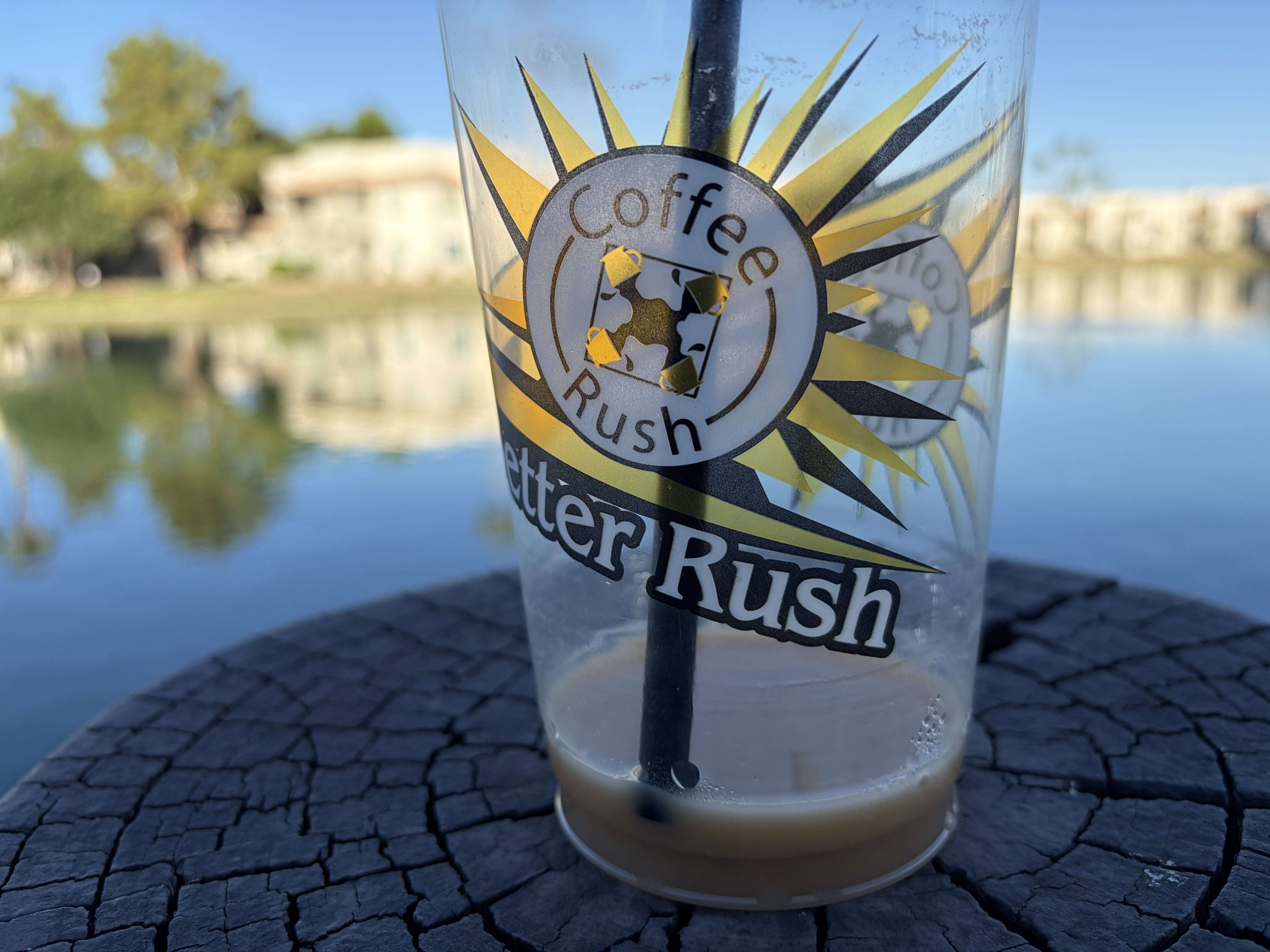
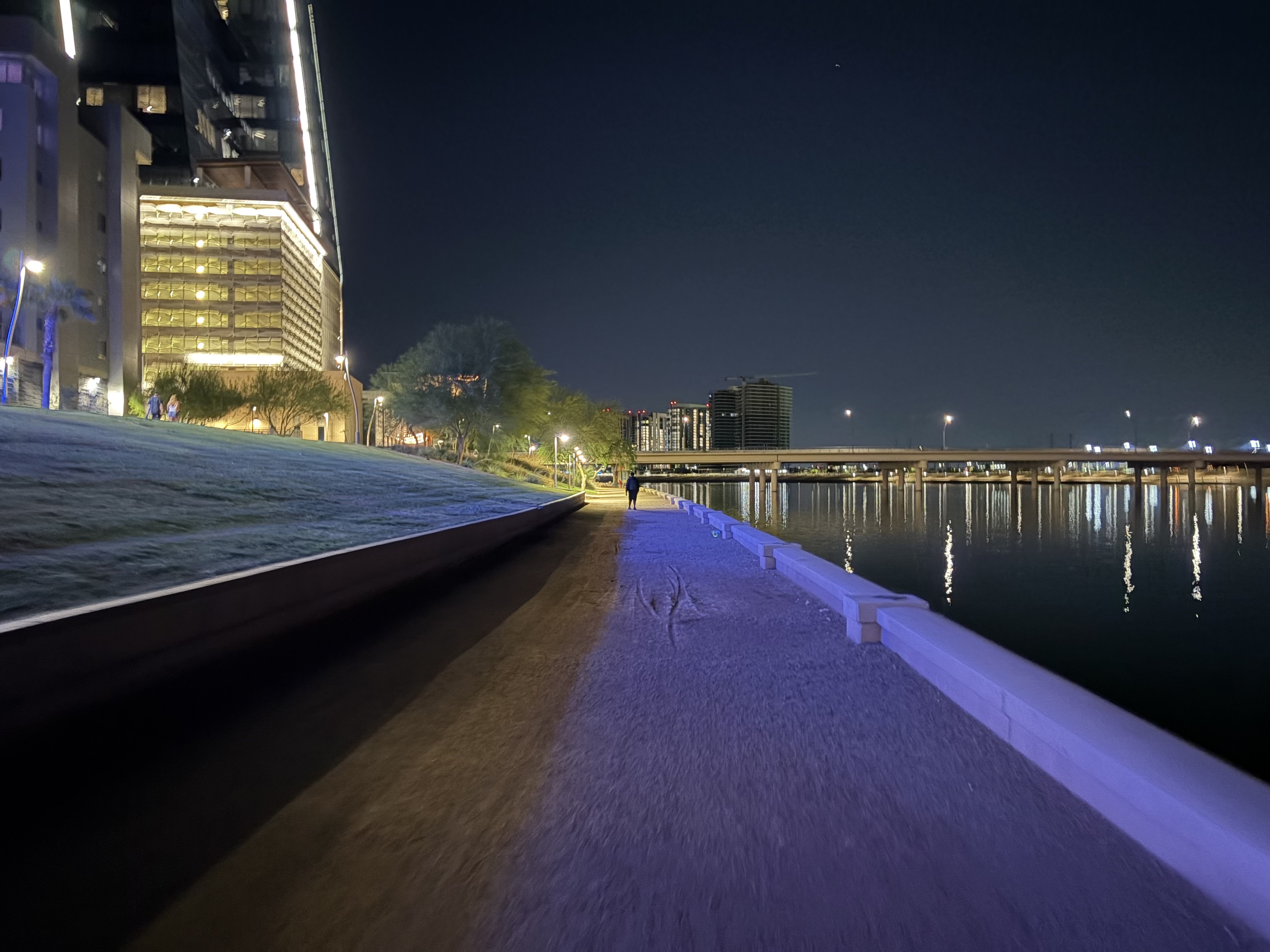
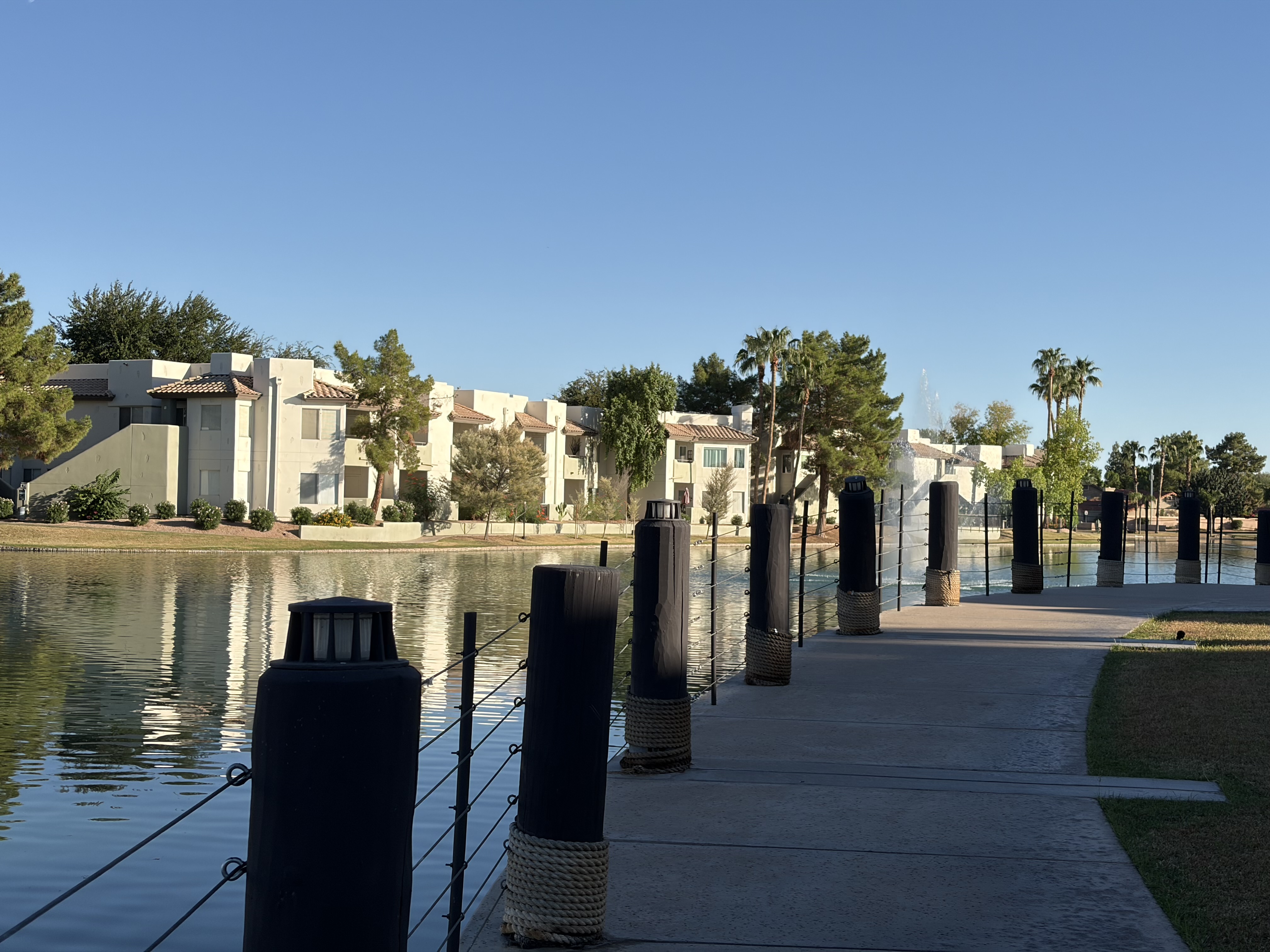
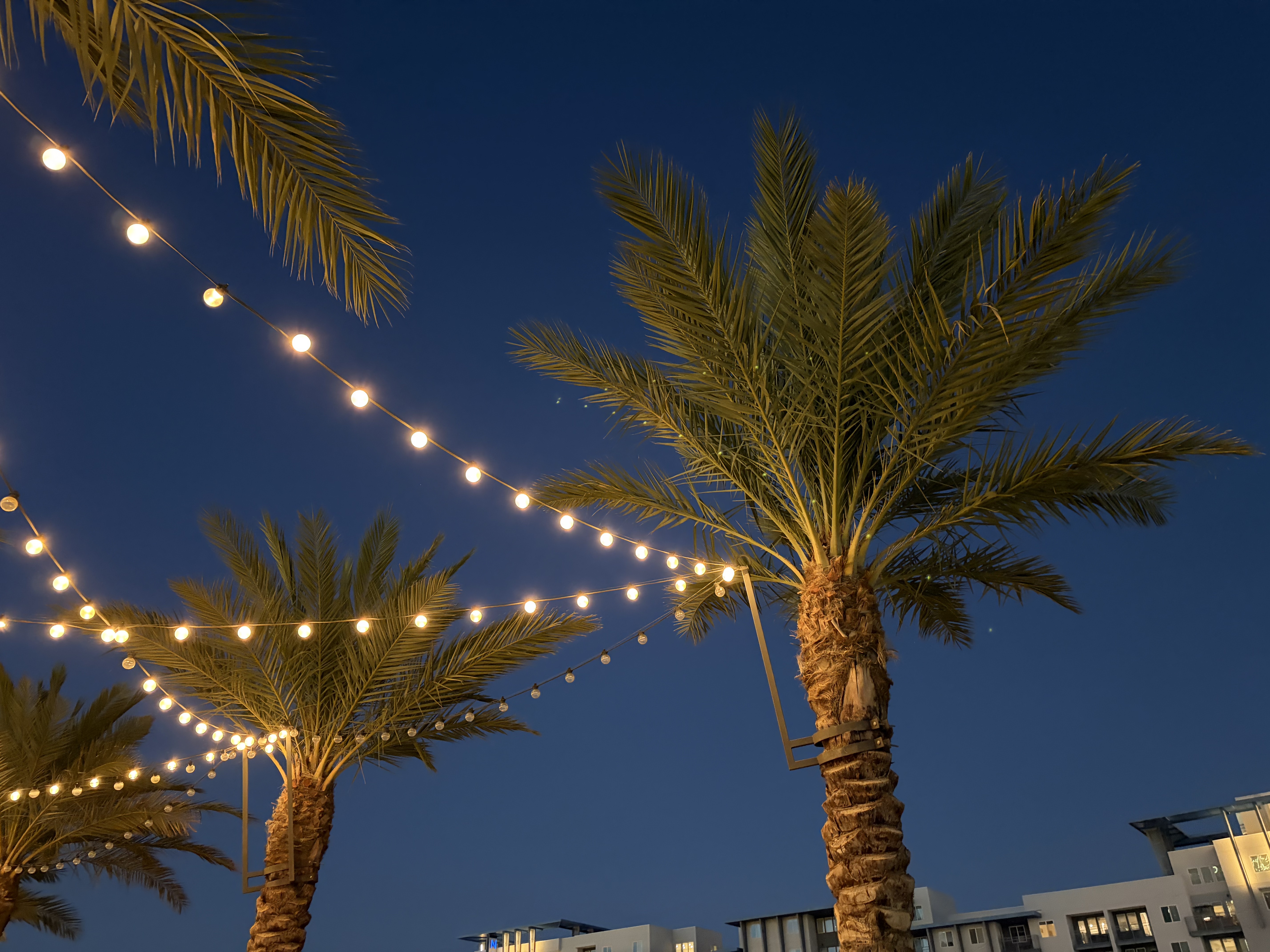

The front camera is perhaps the best upgrade this year. It's an 18MP square sensor that lets you take vertical or horizontal shots without physically rotating your phone. Additionally, the Center Stage feature can automatically crop in or move out to ensure everyone is included in the selfie. I guarantee this is a feature that Android phone makers are taking notice of, because it's the real deal.
Apple iPhone Air: Competition
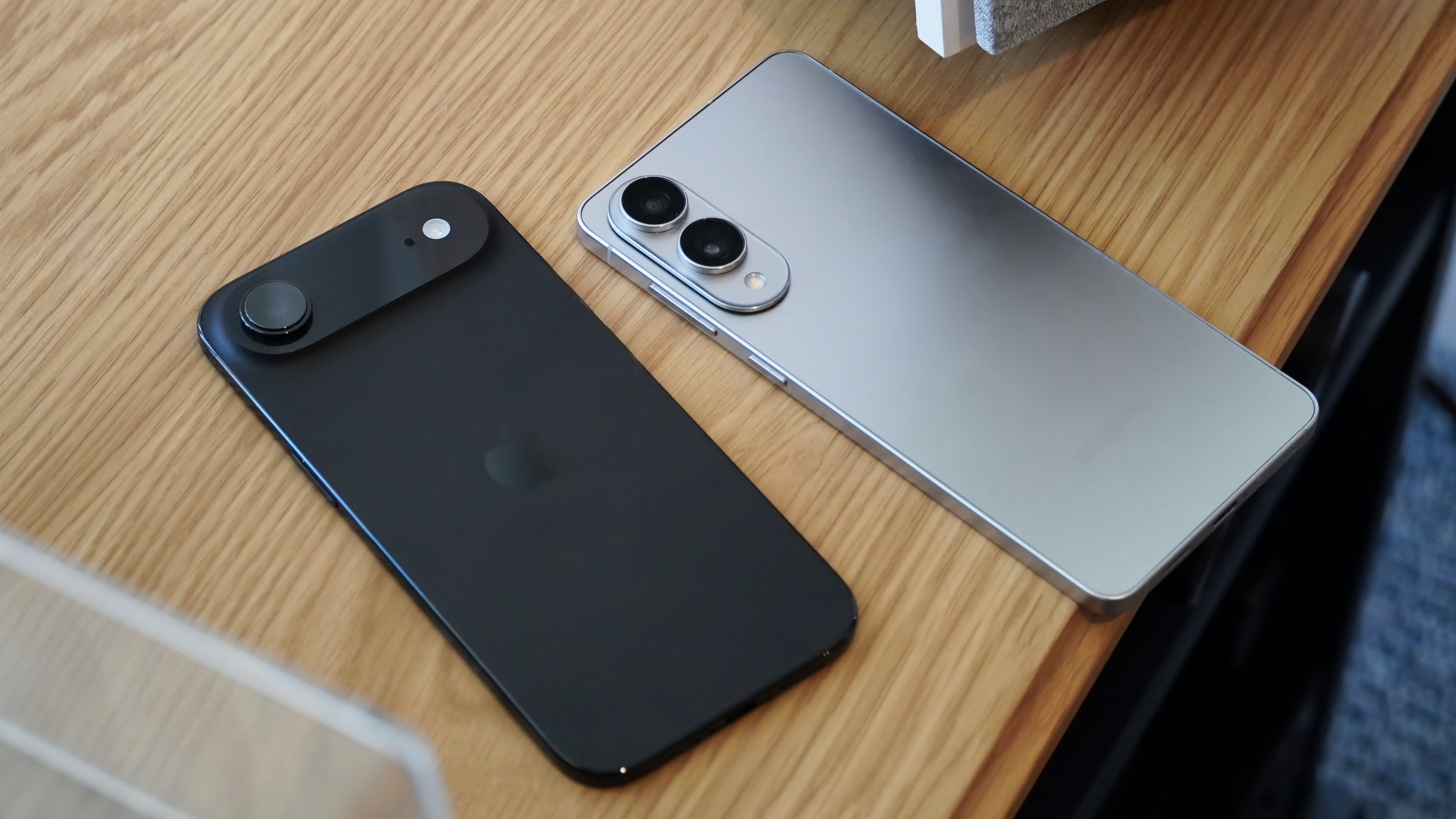
- The iPhone Air's clear advantage over the Galaxy S25 Edge is Qi2 and MagSafe support.
- The Galaxy S25 Edge is the well-rounded phone, with a better chip, extra camera, and more features.
The iPhone Air's main competition in the U.S. is the Samsung Galaxy S25 Edge, as they're both thin and light phones. The Air is thinner, but the Edge is lighter. The Air has MagSafe for easy midday charging, but the Edge has better performance and an ultrawide camera. In other words, both phones have major compromises; you'll just have to choose which ones you'd rather live with.
There's also the iPhone 17 ($799) and iPhone 17 Pro ($1,099), which provide a better feature set than the Air, albeit in different form factors.
Apple iPhone Air: Should you buy it?
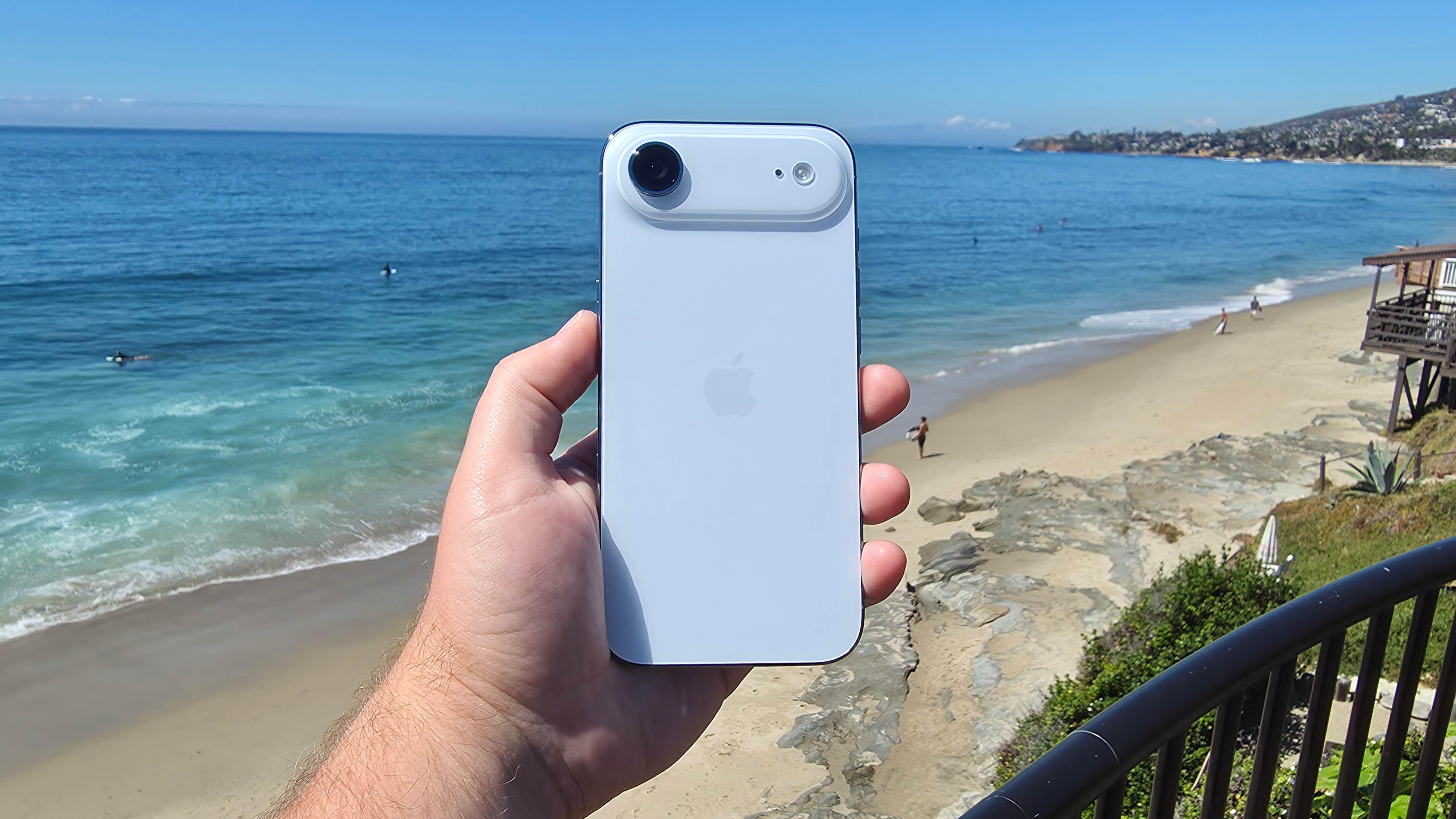
You should buy this if...
- You want a large phone that's still easy to hold and maneuver
- Thinness and lightness matter more to you than cameras or battery capacity
- You don't need or use an ultrawide or telephoto lens often
You shouldn't buy this if...
- You want the best-value hardware in an iPhone (get the iPhone 17 or a Pro instead)
- You want a slightly thicker, but still thin, phone with fewer compromises (get the Galaxy S25 Edge)
- You'd rather wait and see what improvements an iPhone Air 2 might be
The iPhone Air is aimed at people who think having a thinner and lighter phone will make using it easier, such as runners who want to carry a phone with them while working out without it being unwieldy. Whatever your reason, the combination of a 6.5-inch screen, 5.6mm thickness, and 165-gram weight is a market anomaly that only exists in the iPhone Air.
That said, it's true that this version of the iPhone Air will be the worst one to ever exist, as if an iPhone Air 2 comes out next year, it'll assuredly be better. Don't underestimate the compromises made to create the Air, either, because they're real, and they might change what you can do and how you can do it on your smartphone.
It's also true that the rumored foldable iPhone will almost certainly take cues from the Air's design. If either of those prospects excites you, perhaps you should skip the iPhone Air and wait. On the flip side, if you want a slightly thicker and more "normal" phone than the Air, the Samsung Galaxy S25 Edge is a sleeper.
Thin and light
The iPhone Air serves two main purposes: its 6.5-inch display strikes a balance between small and large phones, and its design is seriously thin and light. If you're willing to lose cameras and battery life to achieve those two things, buy the iPhone Air.







